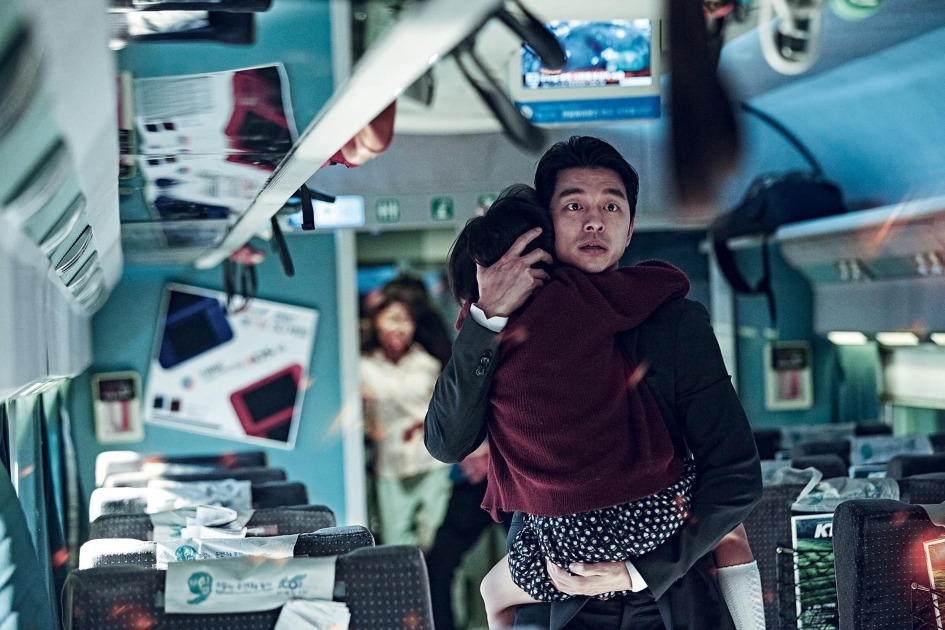The horror cinema is a film genre of which we confess absolute fans. Terror is a very intense feeling of fear produced by a distressing disturbance of the mind, either by real or imaginary risk. Terror is what catches you and does not let you go, that makes you have nightmares at night, but at the same time is capable of producing extreme fascination.
Horror movies have existed since the beginning of cinema, although it is with German expressionism and Universal monster films that we can speak of a genre in itself. Gothic horror, science fiction and alien cinema, paranormal terror, the slasher or subgenre of the psycho killers, gore, zombies , giallo … From all and for all the tastes. Making a list of the best movies is a complicated task, but we have gladly undertaken it, trying to accommodate the old classics, the best samples of modern horror and some personal weakness.
Join us on a tour of the 107 best movies in horror film history!
ATTENTION: We warn you that the following films can hurt your sensitivity or cause chills and / or nightmares.
1. M (1931)
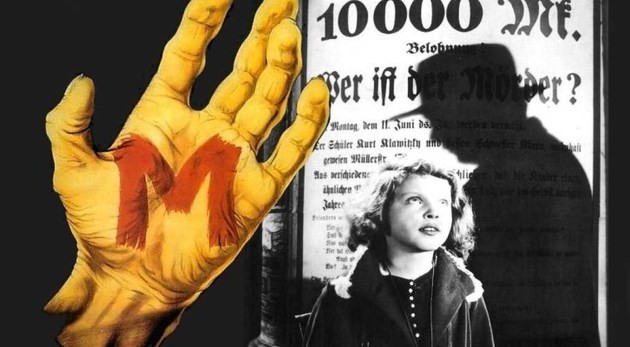
Director: Fritz Lang
German in its purest form. A black and white capable of freezing our blood. A serial killer who kidnaps children and who is the germ of most of the phsyco killers that would come later. A Lang masterpiece with which he managed to position himself at the head of the new cinematographic avant-garde and that constitutes a canonical example of horror cinema.
2. Scream (1996)
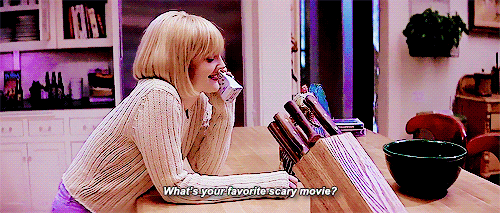
Director: Wes Craven
film that resurrected the slasher thanks to one of the essential directors of the genre. A brilliant script full of horror film references, humor in the right doses and a suspense perfectly executed by Craven make Scream a modern classic that has not lost one iota of its playful charm.
More than watching the characters die, the real fun of the film is finding out who is hiding behind the mask of Ghostface. A film that revolutionized the genre and enjoyed 3 sequels that never lived up to the original.
3. Let the Right One In (2008)
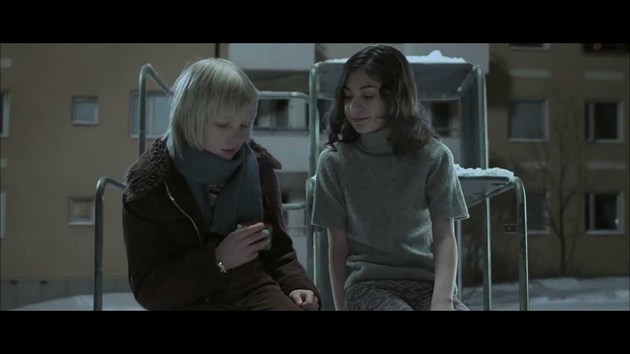
Director: Tomas Alfredson
This film about a “normal” boy and a vampire girl, both teenagers, is a wonderful and mature reflection on immortality, the thirst for blood and the need for belonging. Oskar and Eli learn to trust each other through their macabre shared obsessions and their deepest secrets.
A beautiful film that oscillates between the emotional and the terrifying, crossing the limits of the genre and offering a small work of art in images. It had an American remake titled Let Me In (2010), directed by Matt Reeves and starring Kodi Smit-McPhee and Chloë Moretz.
4. Peeping Tom (1960)
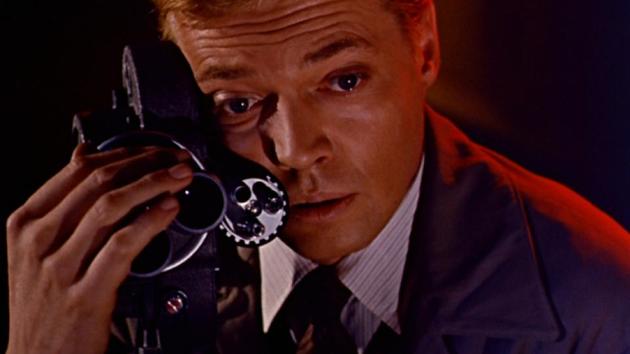
Director: Michael Powell
An amateur photographer and filmmaker (Karl Boehm) earns a living taking nude photos and finds sexual pleasure by stabbing women with his tripod blade while filming it all. The act of making films is itself a way of satisfying the voyeuristic needs of viewers, according to Powell, a renowned British film director who surprised everyone with this intense film related to the cinema of Hitchcock and Antonioni.
Terrifying psychological horror drama that explores the obsession to capture the image of the panic that occurs at the moment of being assassinated, the film often adopts the subjective point of the protagonist, which makes the experience even more perverse.
5. House of the Devil (2009)

Director: Ti West
[ 19459002] A retro-style tribute to the sub-genre of satanic cults in a slow-building film, creating a haunting (and sometimes exasperating) atmosphere that ends up exploding into forceful and surprising final violence.
Set in the 80s and shot in 16 mm., It shows that, as Hitchcock said, in any good thriller it is the anticipation, not the event itself.
6. Jaws (1975)
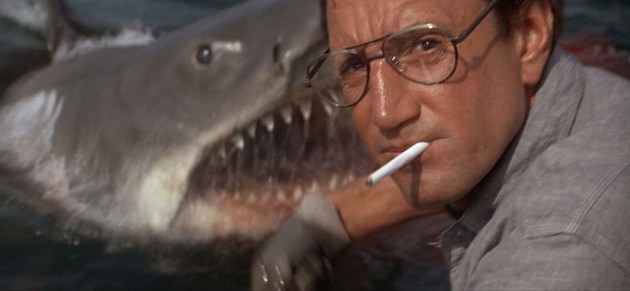
Director: Steven Spielberg
indisputable masterpiece of the Seventh Art. An undying classic and the movie that made Spielberg a star. All the elements of the film work with the precision of a clock, from a cast of luxury (Roy Scheider, Richard Dreyfuss and Robert Shaw) that gives humanity to its characters, passing through a suspense dosed with the usual brilliance of the director, to the famous score by John Williams that just listening to it is able to put fear into our bodies when bathing on the beach.
Adventure in its purest form, suspense, terror, humor, drama. Like the “Bruce” shark, the life-size replica that was built for filming, Spielberg is a true force of nature.
7. Don´t Look Now (1973)

Director: Nicolas Roeg
One of the most devastating, disturbing, and sensual horror movies in film history. A meditation on pain, loss and mortality based on the Daphne du Maurier novel. The marriage made up of Donald Sutherland and Julie Christie (magnificent both) move to Venice in the hope of recovering after the tragic death of their daughter. However, a new tragedy awaits them there.
The film combines the present, the past, and the future, using subtle visual metaphors to indicate impending doom and drag us to the depths of guilt and despair.
8. Freaks (1932)

Director: Todd Browning
[1945900] Unclassifiable gem literally ended the career of its director, despite the success and popularity achieved with Dracula , due to bad reviews and ruthless censorship, which significantly affected its performance at the box office. The public considered it disgusting and produced excessive reactions of rejection. Obviously, a film ahead of its time, which luckily has been revalued over time and reached the status of cult film.
A group of circus artists and a series of “monsters” that are on display to the delight and horror of the public are the protagonists of the film, which features authentic circus performers and people with physical disabilities in its cast. and different kinds of “quirks”. However, the beautiful Cleopatra and the strong Hercules, the “normal” characters, are the true monsters of the story, because they are characterized as corrupt people who try to take advantage of the Freaks.
9. Frankenstein (1931)
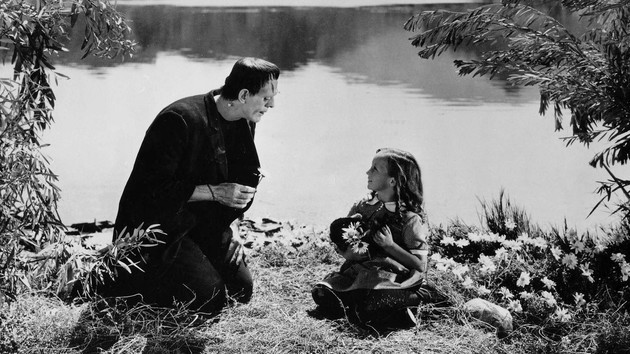
Director: James Whale [1945900] 19459002] Despite its short duration (70 minutes) and its impact on modern culture, the film adaptation of Mary Shelley’s novel had many problems with censorship. One of the most controversial scenes at the time was when the Monster (the chameleonic Boris Karloff) throws the little girl into the lake, causing her to drown.
In a world of men complex of God and eerily human monsters, Karloff’s legendary performance is capable of thrilling and terrifying us at the same time.
10. Frankenstein’s girlfriend (1935)
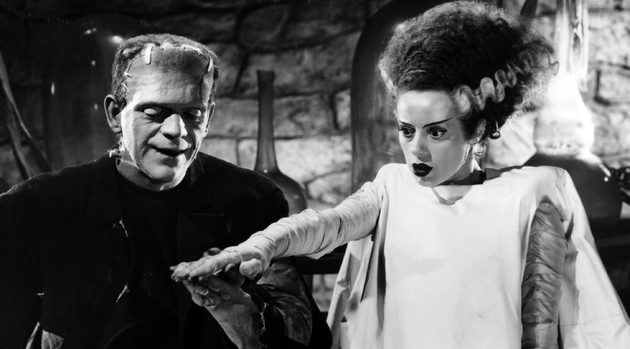

Director: James Whale
19459002] After the great success achieved with Frankenstein, Whale made his masterpiece, his best film and an everlasting classic. Much more than a sequel, this film became his most personal work, leaving his mark as a great director and surpassing the previous title, maintaining even more if possible the essence of the Shelley classic despite taking many liberties.
The touch of metalanguage that supposes the double presence of Elsa Lanchester as writer of the play and companion of the monster, together with its poetic intensity and creative freedom make this film one of the best sequels ever made and a Prodigy of adaptation well understood.
11. The Others (2001)

Director: Alejandro Amenábar
In this film, psychological thriller of supernatural mystery narrated in the form of a perverse fable, it plays with the concept of the living and the dead, with beings who are in either world, with dead who are unaware that they are dead and with others who are aware of it and whose mission is to reveal that truth to those who ignore it.
Sober, austere, sad, perfectly dosed in its mystery and revelations, The Others is brilliant in its execution and offers us an ending that will make us want to see the film again to enjoy it with different eyes. The house where the whole story takes place becomes another protagonist, feeling that claustrophobic effect for being locked up next to the characters, who want to escape the light, the reality, the truth.
12. Alien (1979)

Director: Ridley Scott
perfect mix of horror and science fiction. Sigourney Weaver as the ultimate heroine and the only one capable of coping with the xenomoform stemming from H. R. Giger’s sick imagination. The James Cameron sequel, Aliens (1986), another masterpiece, is on the same level, but we place it more within the science fiction genre.
Gothic-sexual imagery disturbing but of great beauty, a perfect script by Dan O´Bannon, naturalistic and perfectly tuned interpretations of the entire cast. In outer space no one can hear your screams.
13. The Cabinet of Dr. Caligari (1920)
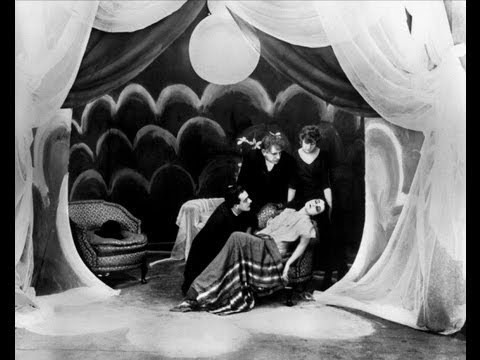
Director: Robert Wiene [19459005 ]
One of the greatest works of German expressionism and an indisputable classic of cinema. A pacifist and anti-authoritarian message on a trip to the origins of madness, with abrupt angles that baffle us and flashbacks within flashbacks that make narration an almost hallucinatory and feverish experience , supported by an ingenious avant-garde design of unreal and theatrical decorations.
It is considered the first horror feature film and its legacy in modern cinema is evident. It is the first film that takes us directly to the mind of an unbalanced person.
14. The Strangers (2008)
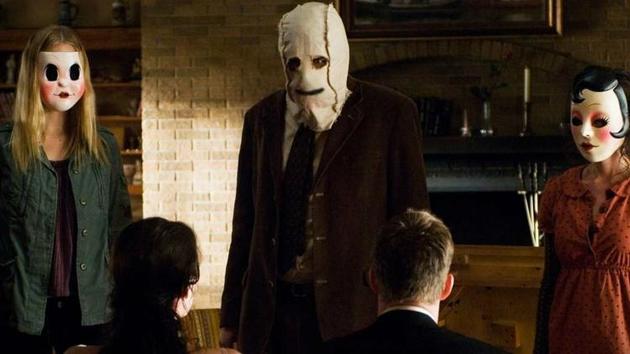
Director: Bryan Bertino] Perhaps the best exponent of the subgenre known as home invasion, this film tells us how a couple in crisis is harassed and assaulted on their weekend getaway in a cabin in the woods.
The disturbing randomness and uselessness of the (too) realistic violence that haunts the protagonists infects us with a deep fear that something like this could be happening next door without us realizing it.
15. Eyes without a face (1960)
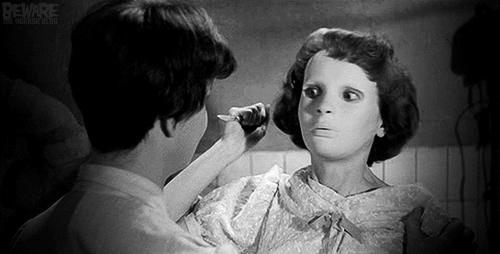
Director: George Franju
[ 19459002] A cult classic of French cinema, rejected at the time by the public and critics, who could not bear the horrifyingly realistic scene in which the skin of a young woman’s face is cut off by the deranged doctor Génessier, obsessed with reconstructing the beauty of his daughter, ruined in an accident for which she feels guilty.
Distressing, slow, poetic, icy, was one of the inspirations for Almodóvar’s (2011), The Skin I Live In, which openly honored her, helping the film to be revisited and revalued . John Carpenter once commented that he was inspired by the Edith Scob mask in this movie for the Michael Myers mask.
16. Black Christmas (1974)
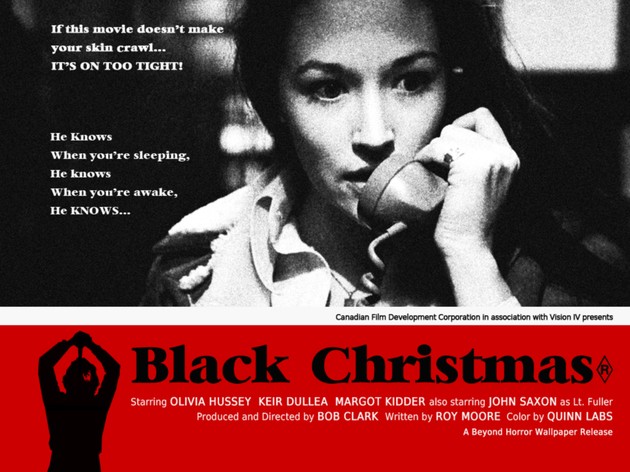
Director: Bob Clark
Elegant and subtle, but with a growing tension that ends up exploding in a violent and ambiguous ending, in addition to being pessimistic. Quite unknown and not valued enough, this movie features elements that would later appear in most of the slashers , which were clearly inspired by Clark’s film.
Black Christmas is one of the few films in the genre that treats its victims with relative respect, without over-sexualizing or punishing them for their sexuality. In 2006 a remake directed by Glen Morgan was released.
17. Carnival of Souls (1962)
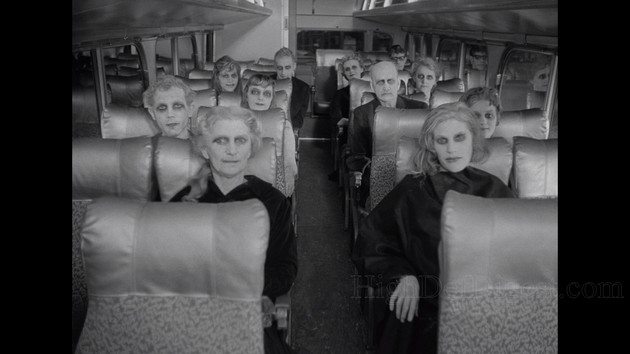
Directors: Herk Harvey, Ian Kessner, Adam Grossman
A kind of marginal classic, never elevated to the status of a masterpiece, nor one of the best known to the general public. Its originality and powerful iconography make it a cult title that has been gaining popularity over the years.
The choice of black and white already denotes his interest in offering concise terror, without forced or sophisticated narratives, based on the most basic (but most effective) mechanisms to provoke terror. Its unreal and perverse atmosphere and the way the film shows the abnormal behaviors of a series of everyday characters, manages to transmit a feeling of restlessness, uneasiness and fear of the unknown.
18. Audition (1999)

Director: Takashi Miike
in its first half and unpleasant to excruciating extremes in its final stretch, according to its detractors. The truth is that Audition prefers to adopt a deliberate (and risky) parsimony and sobriety in its rhythm during most of its footage to shake us violently in the final part of the story.
The praying mantis embodied by Asami will make you think twice before going to do acupuncture … Kiri, kiri, kiri!
19. The Fly (1986)

Director: David Cron
The project to make a remake of the first version from 1958, an interesting series B production based on a Georges Langelaan account, came to Cronenberg on the rebound but was excited to find in the script elements that seemed to come from his own imagination.
That the protagonist (a dedicated Jeff Goldblum) retained human features for most of the footage makes the process more symbolic and more terrifying, distressing and dramatic. Unlike the original version, where the scientist and the fly were exchanging parts of his body, here is a fusion that gives rise to a new being, which mutates internally and externally, thanks to a formidable work of special effects and makeup.
Cronenberg always viewed this film as a tragic love story, since in some ways metamorphosis is a metaphor for disease or aging.
20. Maniac (1980)
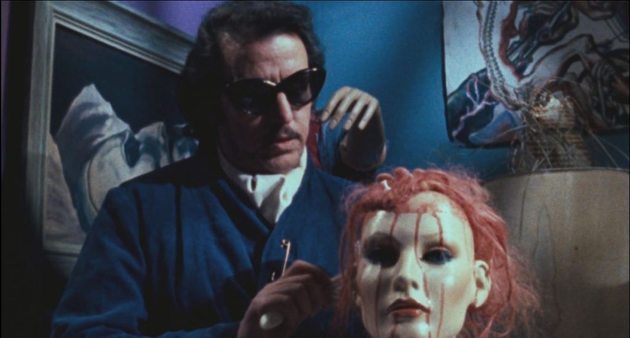
Director: William Lustig
19459006] Maniac is a macabre and merciless portrait of a character who lives in the shade, Frank Zitto, a pathetic man who spends most of the time locked in his tiny apartment surrounded by grotesque mannequins and venerating the image of his dead mother, but who occasionally goes out at night to murder young women who have their scalp torn off.
The interesting thing about the film is that we see everything through Frank’s point of view, with the story basically focusing on the progressive degeneration that he suffers through his crimes. Its cursed movie character (it was branded as misogynistic and macho) is further accentuated by its explicit and unpleasant violence. A jewel with a sordid aesthetic and black humor that had an interesting remake directed by Franck Khalfoun and with Elijah Wood in the skin of the murderer.
21. Insidious (2010)
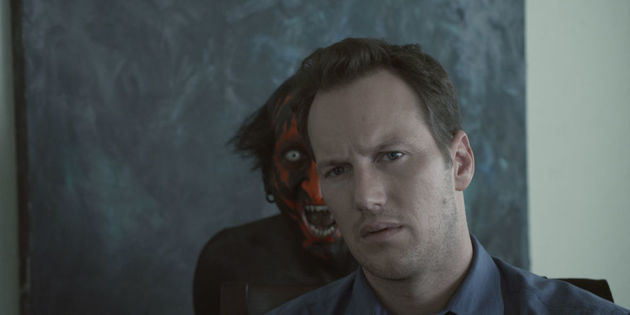

Director: James Wan
Wan and screenwriter Leigh Whannell said the film was based on stories of haunted sagas and ghosts that had scared them as children. Although it has become a franchise, it is the first two films that form the closest thing to a closed story in itself, the later two being centered on the character of the medium Elise Rainier.
The combination of the everyday and the fantastic, the use of space and the creation of a vivid atmosphere of terror make it capable of disturbing and entertaining equally.
22. The Conjuring (2013)
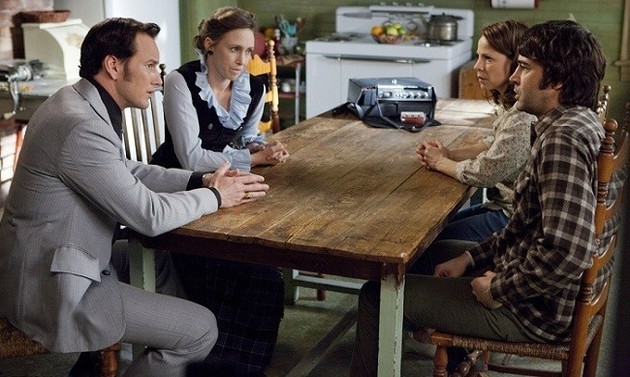
Director: James Wan
The combination between an indisputable formal elegance and an elaborate design of each shot, together with a measured atmosphere of terror of the good, make this first cinematographic adventure of the Warren marriage a success on all levels.
Vera Farmiga and Patrick Wilson are magnificent and the setting of the time is well cared for and works perfectly. His second installment raised the level of scares and featured terrifying new characters who were blatantly searching for their own movie.
The worst, that it can become a franchise without personality and forget to be really scared. Best of all, they take the viewer as seriously as the characters themselves take themselves.
23. Hellraiser (1987)
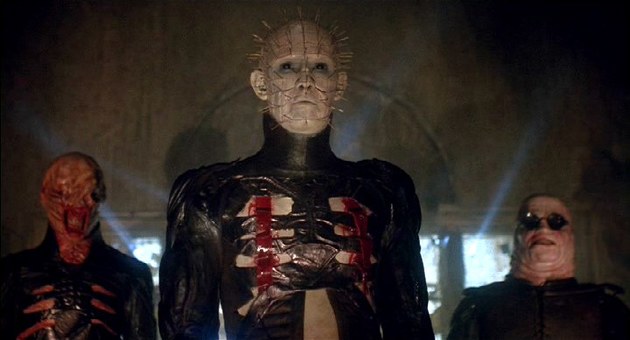
Director: Clive Barker
famous horror novelist directed his first film based on his own story, inaugurating a mythology that spread in numerous sequels, comics, novels, video games, etc.
The film explores the link between pain and pleasure, but it does not end in a brilliant exercise in fetishism for lovers of leather and sadomaso, but rather dives into the limits of horror thanks to the presence of the Cenobites, the so-called theologians of the Order of the Incision. For his creation, Baker claimed to have been inspired by punks, Catholicism, and his visits to sadomasochistic clubs.
24. Frenzy (1972)
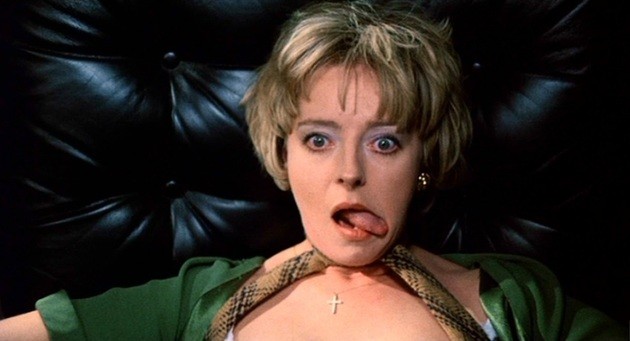
Director: Alfred Hitchcock
Probably the most twisted film by the suspense teacher, it stars a psychopathic murderer who rapes and strangles his victims, all of them women, with extreme violence and sharp dialogues that today would scandalize more than one.
Probably Hichcock’s latest masterpiece, which takes advantage of the freedom that the 1970s represented for film history, mixing violence, suspense, sex, and humor in a perfect balance.
25. The Birds (1963)
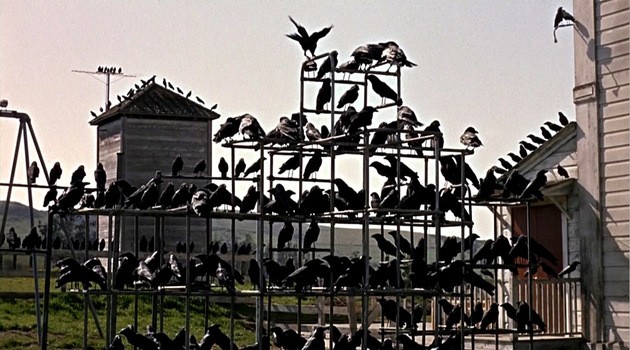
Director: Alfred Hitchcock] Although many may argue that it has not aged as well as other Hitch movies, there is no doubt that this movie has earned the right to be on this list in its own right. This story about the tragedy of an improbable animal invasion ends up revolving around why the birds choose this small “harmless” town (Bodega Bay) to start their attack.
Adaptation of a short novel by Daphne du Maurier, the original ending proposed by the director contemplated the flight of the protagonists to San Francisco, where they encountered the same invasion from which they believed they had escaped. Due to lack of financial and technological resources, it could not be done, opting for that heartbreaking open ending so typical of the zombie movies that would come later, which drink a lot from the fight for the survival of the characters in this film. The protagonists do not achieve a definitive victory, they can only continue to flee to avoid succumbing to a fatal fate.
26. The Brood (1979)
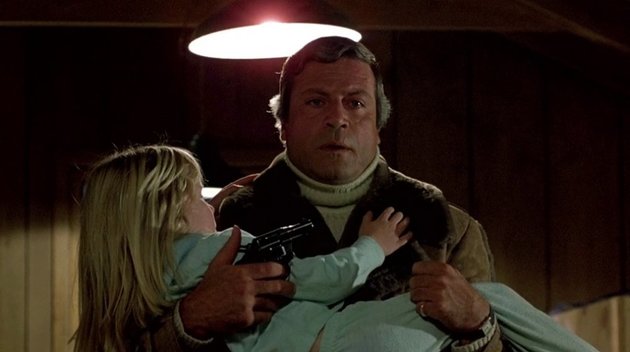
Director: David Cronenberg] In the 1970s, Cronenberg would make three films ( Shivers , Rabid , and The Brood ) that explore his obsessions with sex and “new meat” and they advance the elegant and science fiction aesthetics that would later become their hallmark.
Biological and spiritual terrors, aftermath of a divorce and a corrupted motherhood and the somatization of trauma are some of the themes present in this film, one of the most autobiographical of the director, which at the time was disputed custody of his daughter with his first wife.
27. Poltergeist (1982)
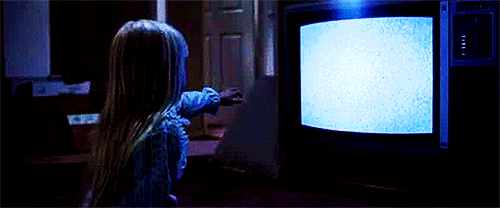
Director: Tobe Hooper
By Steven Spielberg, it has always been speculated that he was actually the director of the film (accompanied by Hooper, of course), but that he could not be credited as such due to a clause in his contract for Universal Pictures [19459007 ], with which he was shooting ET , which prevented him from directing another tape in the same year.
Caroline being abducted through television, toy clowns that come to life, creepy trees trying to catch you, various hallucinations … it’s what it is like to live in a house built on an old Indian cemetery. A classic from the 80’s, terrifying but at the same time for the whole family, with a memorable Zelda Rubinstein as the medium Tangina Barrows.
28. Night of the Living Dead (1968)
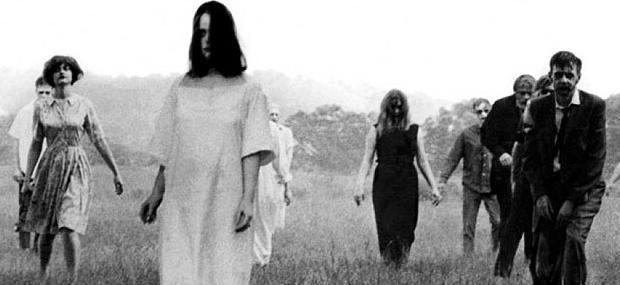
Director: George A. Romero [ 19459005]
The film that created the zombie sub-genre and its director’s first approach to a world that he continued to explore until his passing through different films that offered different approaches to the landscape of a world in which humans have to living with the “returnees” of death.
The terror produced by the attack of the zombies serves Romero to dissect the human soul and offer an unkind portrait of the living, full of prejudices and not positive attributes, aggravated in crisis situations. In 1968, the Vietnam War and the attitude of the police during the Civil Rights movement had generated a growing distrust of authority and of “the other” in general. The human being, after all, is the worst enemy of himself.
29. Near Dark (1987)

Director: Kathryn Bigelow
The best vampire movie of the 80s. A neo-western about modern vampires, bandits whose home is the road and who stands out for inventing his own mythology, forgetting about crosses and stakes.
A magnificent director who would offer us another masterpiece of science fiction cinema with Stange Days (1995). A luxury cast that includes Bill Paxton, Lance Henriksen and Jenette Goldstein (Private Vásquez from Aliens ). Sex, drugs and rock and roll as the only way to be in love and close to death at the same time. Tangerine Dream soundtrack. Cult film that marked an entire generation, in the same year as Joel Schumacher’s The Lost Boys offered another slightly more sweetened (but equally interesting and successful) version of the bloodsuckers.
30. Session 9 (2001)


Director: Brad Anderson
It is in its least spooky section where the film plays its best assets and where its greatest plot originality lies: in worrying more about the characters than the creepy closed space where they have to fulfill their mission.
However, this does not mean that the Danvers State Hospital is not an overwhelming place that permeates all the footage and takes the characters to the abysses of madness, playing with ambiguity and building their terror from the uncertainty and the unknown.
31. The Howling (1981)
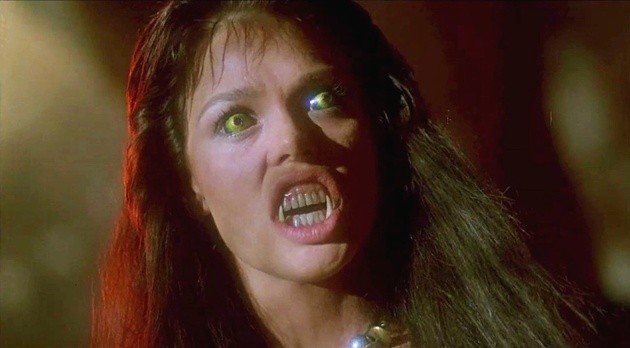
Director: Joe Dante
Released the same year as the John Landis film (next on our list), The Howling was the first step in Dante’s consolidation within North American industry. Rob Bottin, an outstanding student of the legendary Rick Baker, was in charge of the special effects and the characterization of the lycans, but you have to be fair and recognize that you are not on the same level as his teacher.
The best thing about this film is that it assumes its B-series character without complexes, giving little importance to the characters and focusing more on the impact of the supposedly terrifying scenes. If it were not for Dante, this mediocre story would not be on this list, but we have a special affection for him and also Dee Wallace-Stone, one of our fetish actresses from the 80s, who would suffer again in Cujo (1983), by Lewis Teague.
32. An American Werewolf in London (1981)
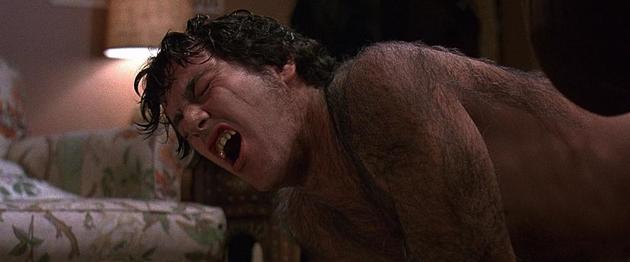
Director: John Landis
Considered by many to be one of the best horror movies of all time, its mix of comedy and horror and its remembered and shocking special effects (for which Rick Baker won an Oscar) have made it a cult film. among fans.
Landis’s mastery makes us not only face a monster movie, but also explores topics such as grief at the loss of a friend, guilt for becoming a murderer, and the dire need to reconcile with the dead.
33. Fright Night (1985)

Director: Tom Holland
Along with Near Dark and The Lost Boys, the Tom Holland film served to mark a before and after in the vampiric myth, updating it for the time but without giving up its classic roots. His peculiar treatment of the figure of the vampire is still in force today: elegant, attractive and very sexually active.
Wisely mixing humor and horror, he drinks a lot from other movies but has his own personality. A classic eighties with some great Chris Sarandon and Rody McDowall.
34. The Omen (1976)
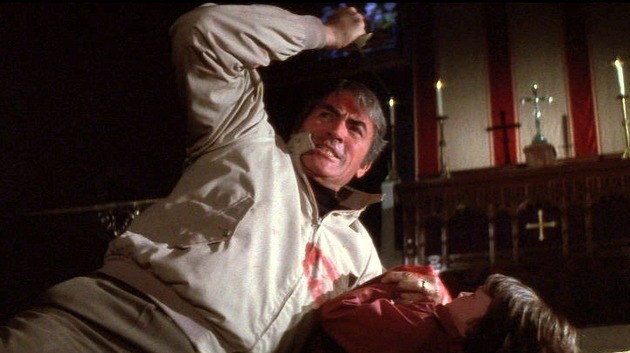
Director: Richard Donner
Thanks to Donner, the story became an elegant thriller of mystery and suspense, moving away from the archetypes of the horror genre of that time. Always with the insinuation as a rule, the dark coincidences that are happening do nothing but increase the paranoia of some poor Gregory Peck and Lee Remick who do not quite realize that the apparently innocent Damien hides the Evil behind his disturbing gaze.
Leaving gimmicky effects knocks aside, Donner leans on the characters’ gaze and on building a psychologically oppressive environment. The ending is still one of the most disturbing of the entire genre. Both the Ave Satani by Jerry Goldsmith and the mythical Carmina Burana by Carl Off help to make our hair stand on end throughout the footage.
35. 28 days later (2002)
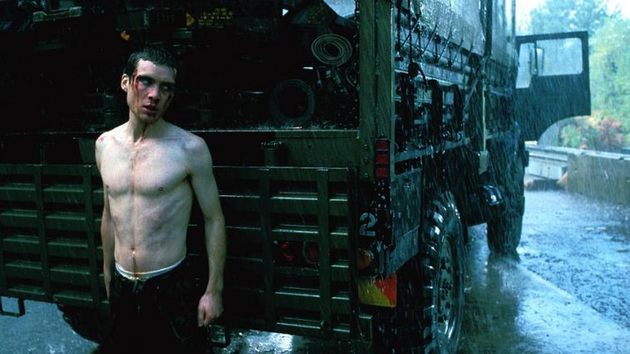
Director: Danny Boyle
The zombie subgenre was almost dead when Danny Boyle and Alex Garland (screenwriter of the film) injected him with a necessary dose of adrenaline and humanity to make him resurface, all mixed with acidic social criticism and intelligent cultural reflections.
A shocking visceral horror experience, thanks to a smart script and a great cast (Cillian Murphy comes out). Boyle’s digital cameras make us feel like we are witnessing what it would really be like if the “infected” took over Earth. The film generated great debates about whether the “fast zombies” or the “slow zombies” were more terrifying, since some terrifying races stick here.
36. The Innocents (1961)
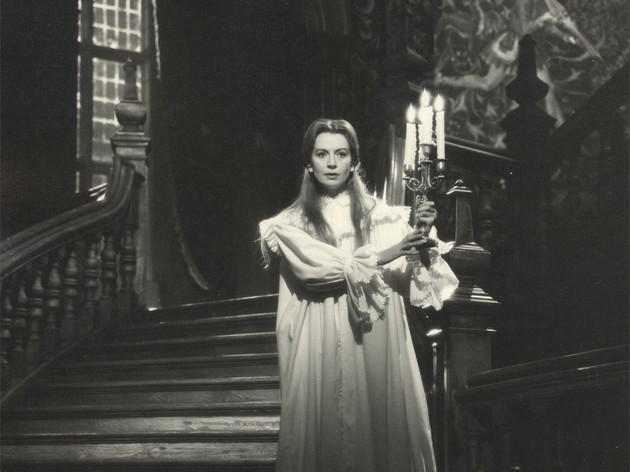
Director: Jack Clayton
This horror film with a script adapted by Truman Capote about the Henry James novel is about what happens in the shadows, rather than what can be seen at first glance on the surface. Black and white serves to highlight this idea and give an atmosphere of constant evocation and mystery, where each corner seems to harbor a threat.
We are never entirely sure if the ghosts are real or a manifestation of a repressed mind (that of the governess played by Deborah Kerr) who is ashamed of losing innocence.
37. Dawn of the Dead (1978)
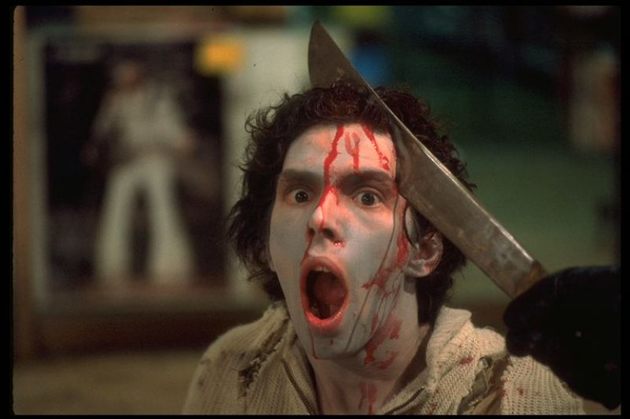
Director: George A. Romero
After the spectacular success of The Night of the Living Dead, Romero decided that he wanted to continue exploring the genre and giving it new twists, showing a deteriorating society beyond the zombie invasion: racial, social tensions and an alienated middle class whose only concern is consuming and not thinking.
Using a shopping center as a metaphor that we are all becoming zombies within our gentrified existences, the film is a denunciation against materialism and against a society that has lost its values. Of course, the gore is not missing in the film thanks to the makeup of Tom Savini. Dario Argento wrote the script with Romero and was responsible for the version for the international market of the film.
38. Dawn of the Dead (2004)
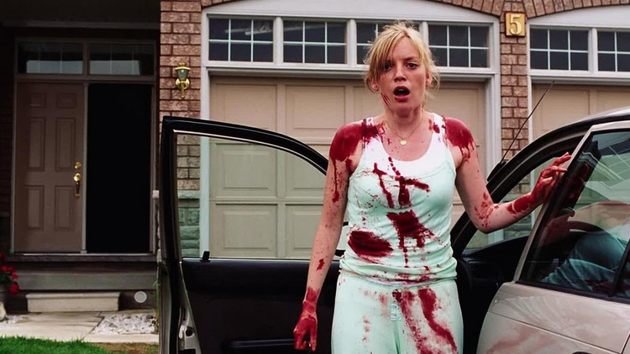
Director: Zack Snyder
Zack Snyder’s directorial debut is a terrifying, realistic, and forceful remake of the Romero film, with substantial changes that made it a major piece of the genre. The script is written by James Gunn, who maintained the premise that the survivors took refuge in a shopping center but preferred to tell a new story from there.
In Snyder’s movie, the undead run fast and are much more aggressive, unlike Romero’s, and the infection and the process of reviving the dead were greatly accelerated, causing the “zombie crisis” to be a blood virus instead of a mysterious plague. The feeling of panic and despair and the devastation of society is accompanied by special effects and extraordinary makeup, a great cast and a bloody, forceful and fun direction.
39. [REC] (2007)

Directores: Jaume Balagueró y Paco Plaza
Belonging to the subgenre of found footage, the excuse in this case so that the camera does not stop recording at any time (imperative that sometimes is absurd to maintain) is that the protagonist, Angela (a wonderful Manuela Velasco) is an intrepid reporter TV station that is trapped in an apartment building that is the origin of a satanic zombie infection. Although at first he tries to document the facts to help combat the spread of the “virus,” he will end up having to fight tooth and nail to get out of the building alive.
Brilliant at creating a stifling claustrophobic vibe, stylistically flawless and without unnecessary fuss, the final minutes of the film are one of the most terrifying experiences to be found within the genre. It had three sequels, each offering interesting and different approaches to the “infected” theme, and also suffered a horrible 2008 American remake titled Quarantine (Quarantine).
40. Evil Dead (1981)
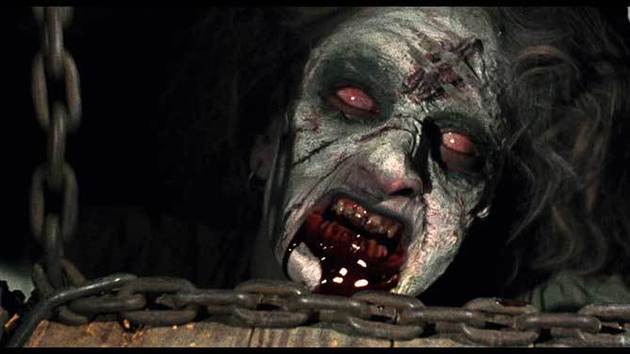
Director: Sam Raimi
Undisputed cult film, this light-hearted and frantic first film is the reflection of a young director’s passion for the genre with great skill in narrative planning and creating a (terrifying) very well-kept atmosphere, especially in that monstrous forest that manages to transmit claustrophobia, horror and intrigue.
Despite its “cheap” B-series look, the film relies on its enormous visual power to become a kind of delusional roller coaster in a blatantly shameless tone. Its sequel, Evil Dead 2 openly indulged in humor and riot of violence and gore, making the Ash played by Bruce Campbell the absolute hero of the trilogy and a cult character.
41. The Descent (2005)
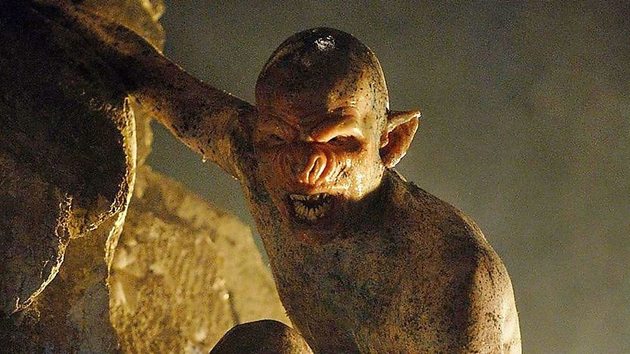
Director: Neil Marshall
A modest but magnificent genre film in which excess hemoglobin is quite aptly mixed with lucid, claustrophobic and purely physical terror. The scares and extreme anguish accompany six women in their fight for survival locked in a cave where dangerous, very unfriendly beings live.
The atmosphere of fear and tension and a climax of heart attack stand out along with the great work of the leading actresses.
42. Phantasm (1979)
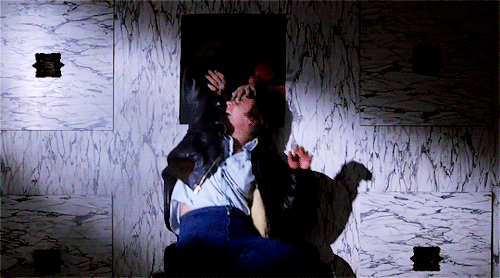
Director: Don Coscarelli
The lack of means and budget is made up thanks to the overflowing imagination of the director, who performs a hodgepodge of genres ranging from pure and simple surrealism to science fiction, through gore, humor, family drama and a villain who quickly entered the pantheon of icons of terror: Angus Scrimm, the Tall Man.
A film to rediscover or revisit. If you don’t panic, you’re already dead.
43. Henry: Portrait of a Serial Killer (1986)

Director: John McNaughton
This almost naturalistic style film about the life of a serial killer was censored for the graphic nature of its violence (it did not find distribution until almost 5 years after being shot) and focuses more on the victims than on the murderer himself, played by a Michael Rooker who delivers a brilliant performance devoid of the typical tics of serial killers from horror movies.
The long, uninterrupted takes and the mundaneness of most scenes make the brutality of the murders all the more shocking. An essential piece to understand modern terror.
44. The Exorcist (1973)
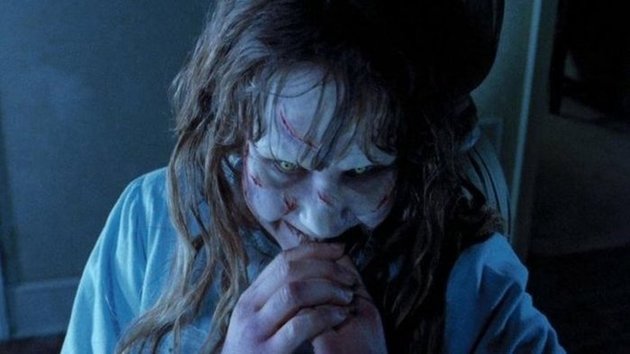
Director: William Friedkin
The Exorcist is one of the key films when it comes to the best horror films in all of history, both for its status as the genesis of the exorcisms subgenre and for its artistic merits (many and very good). For many, let’s say it clearly, the most terrifying movie of all time.
Friedkin, supported by the script by William Peter Blatty (writer of the novel on which it is based) prefers to investigate the emotional wounds of the characters so that what we see on screen, beyond the effects blows, causes us more impact. Listening to Mike Olfield’s Tubular Bells is going back to Regan MacNeil’s room and splashing green vomit.
45. It Follows (2014)

Director: David Robert Michell
With one of the most interesting and intelligent premises seen in the genre in a long time and a magnificent execution, the story revolves around a kind of curse that contracts when you have relationships, something like a supernatural sexually transmitted disease but in shape. of macabre appearance that chases you until it kills you.
Its hazy dreamy aesthetic and a luxurious soundtrack by Disasterpiece make this tour even more enjoyable, playing with our innate fears of intimacy and mortality, paranoia and restlessness.
46. Nosferatu (1922)
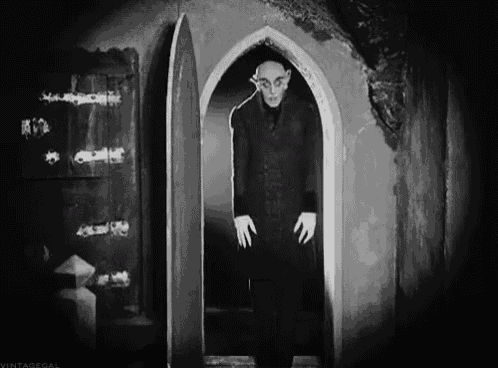
Director: F. W. Murnau
One of the first movies about vampires (and perhaps the best), which does not try to romanticize the myth, but presents it as something sick and scary. Count Orlok (Max Schrek), with his pointed ears and nose, stooped posture, scavenger face, and long, sharp claws, is the physical representation of death.
A silent film masterpiece and cult film, it is the first adaptation of Stoker’s novel, which was not initially well regarded by his widow. Nosferatu, Eine Symphonie des Grauens (a Symphony of Horror) is its full title. Murnau leaned heavily on the work of the romantic painters to offer an almost pictorial experience that, more than frightening, bewitches us.
47. Dracula (1931)
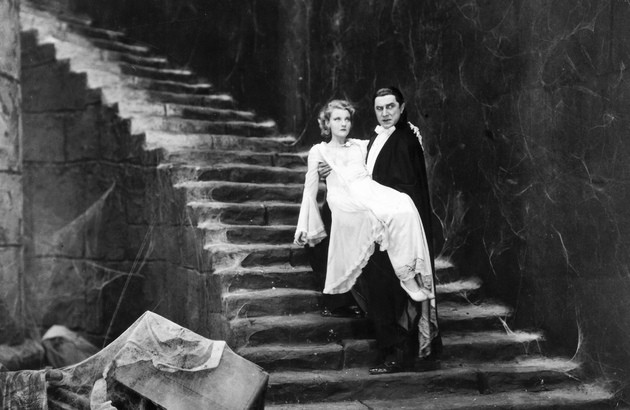
Director: Tod Browning
Bela Lugosi, who had played the count in a play, was the first cinematographic Dracula and the character would accompany him until the end of his days. Browning’s enormous qualities for the ghostly environments in which reality and fiction go hand in hand are especially reflected in the haunting unreal atmosphere of the prologue and the final climax.
Mesmerizing and mesmerizing, the film remains one of the pinnacles of fantasy and yet another masterpiece of its director’s filmography.
48. Nosferatu, The Vampyre (1979)
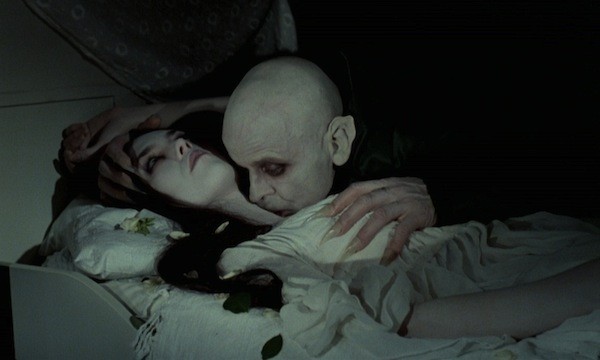
Director: Werner Herzog
Herzog’s impressive remake of Murnau’s film is both a tribute to what he considers to be the best German film of all time, and one of the most representative works of his stormy and poetic filmography.
Murnau delves into the pain of the vampire’s loneliness, which carries immortality like a slab, drifting towards an existentialism that finds its maximum reflection in the pathetic figure of the vampire played by Klaus Kinski, who underwent long makeup sessions to achieve the aspect that its character required.
49. Carrie (1976)
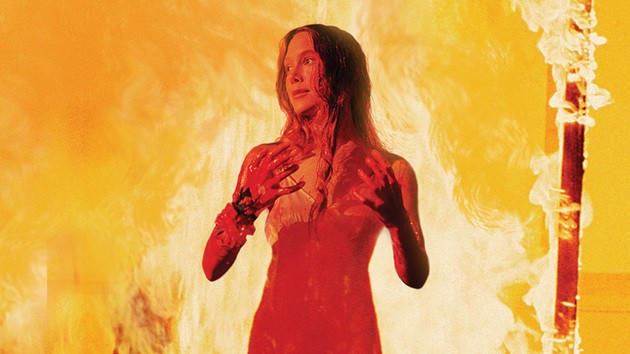
Director: Brian De Palma
Based on a short novel by Master King, De Palma constructed an allegory about guilt and repression, prejudice and fear, awakening to sexuality and the horror of being a victim of abuse. The tremendous performances by Sissy Spacek and Piper Laurie (both nominated for the Academy Award for Best Actress) are the mainstay of the film, perfectly embodying the repressed teenager and her fanatical castrating mother.
As scenes to remember, we are left with two: that graduation dance where Carrie’s telekinetic powers are unleashed after her happiness when being crowned as dance queen is impregnated by the pig blood that the thugs of the institute decide to pour on her to publicly humiliate her; and the mother’s death, pierced by knives and nailed to the wall in a position that refers to the martyrdom of Saint Sebastian.
50. The Shining (1980)
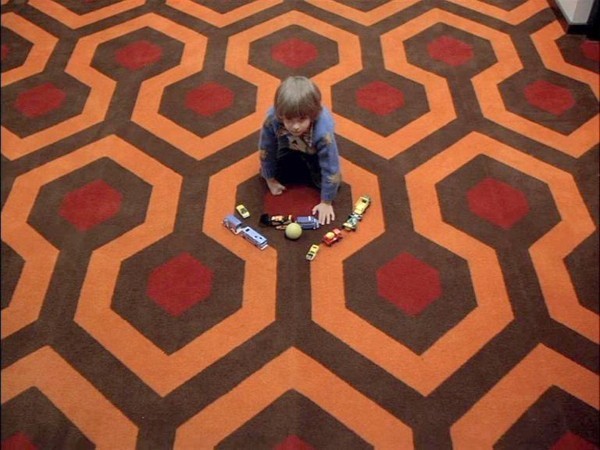
Director: Stanley Kubrick
The macabre and terrifying novel by Stephen King passed through Kubrick’s cerebral style of visual narration. An enigmatic, seductive and expressive ghost story (supernatural and psychological), which many have wanted to see as the expression of a repressed toxic masculinity that explodes with violence thanks to the madness enclosed within the walls of the Hotel Overlook. Basically, the story revolves around the creative process, the artist’s madness and the mental disorders derived from lack of communication. Oh, and let’s not forget the twins in the hallway …
Jack Nicholson unleashed walking the halls with his ax, a Shelley Duvall on the verge of emotional collapse (on and off the screen) and a methodical and demanding director to the point of exhaustion make The Shining one of the best films in the history of cinema and one of the most influential in popular culture.
The film also hides a symbology that many have studied carefully to try to discern all the keys that Kubrick was scattering on the tape. The documentary Room 237 (2012), whose title honors the most sinister room in the hotel, delves into all the symbols and hidden keys of the footage to demonstrate that it is more than a horror movie.
51. Repulsion (1965)

Director: Roman Polanski
Critically acclaimed Polanski’s first English film introduces us to Carol (Catherine Deneuve), a shy young woman saddened by her fear of sex, leading her to extreme imbalance when left alone in her apartment, which ends up becoming in a reflection of his own mind, full of anxieties, trauma and possible abuse.
Psychological horror, sexual hallucinations and another masterpiece of a director who challenges us to see beyond what the images show.
52. The Night of the Hunter (1955)
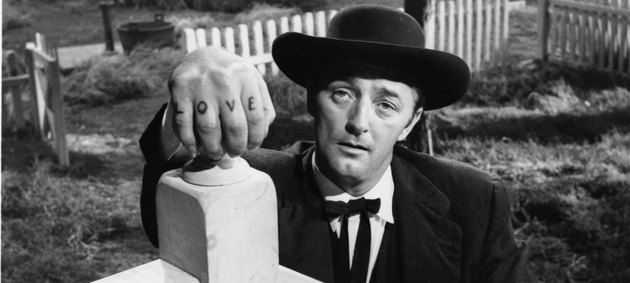
Director: Charles Laughton
Although today it is considered one of the best films in all of history, it was a failure when it was released, being little appreciated by critics and the public. Laughton was so hurt by that failure that he would never direct again.
This unforgettable story manages to leave its mark on the viewer and gives us one of the most amazing characters in the seventh art, the Rev. Harry Powell, embodied with absolute naturalness by an imposing Robert Mitchum who manages to reflect the absolute wickedness of the character, a monster who believes communicate with God.
53. The Blair Witch Project (1999)
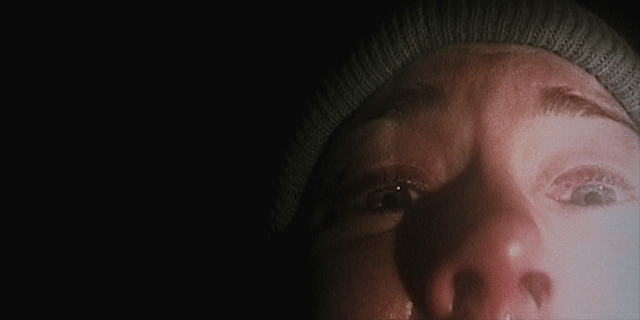
Directores: Daniel Myrick y Eduardo Sánchez
Leaving aside its successful (and groundbreaking) marketing campaign, this film continues to this day dividing the public; While some defend it firmly and praise its undeniable achievements, its detractors accuse it of being empty and deceptive. However, the impressive realism and use of the technology of the time (basically this film created the subgenre of found footage) made it a novel and shocking experience for those who saw it on the big screen.
The three actors (all of them unknown) actually lived in the forest for 8 days (the time the filming lasted), during which the work of recording (in 16 mm.), Sound and narration was distributed. The documentary style openly searches for the chaos and imperfections typical of such a shoot, all for the sake of absolute realism. What the actors did not know were the details that were appearing throughout the story, which made the fear they experienced on camera was true.
Although we don’t see the supposed witch anywhere and the film takes too long to get into the matter, the final sequence is truly terrifying. At its time, the most profitable low-budget film in film history.
54. Psycho (1960)
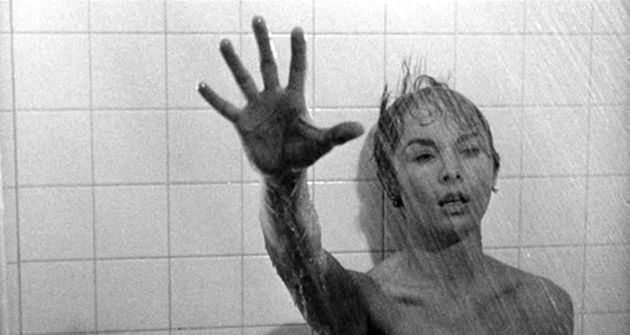
Director: Alfred Hitchcock
The murder in the shower of Marion Crane (Janet Leigh), with 77 different camera angles and the legendary string music of Bernard Hermann is one of the most perfect and iconic moments in film history.
Norman Bates and his mother marked Anthony Perkins forever. A masterpiece in a filmography (that of the British director) full of masterpieces. Not having seen her should be a crime.
55. The Last House on the Left (1972)
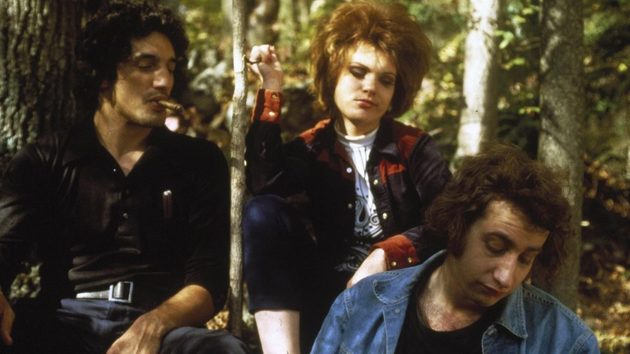
Director: Wes Craven
Unconfessed remake of Bergman’s The Wellhead of the Maiden (1960), Wes Craven’s crude and feist debut, despite his exaggerated and gratuitous violence, is not the groundbreaking film that many wanted to see, although the subjects it deals with (rape and murder of two young girls at the hands of a group of psychopaths) had a great impact in the early 1970s. Craven’s direction is quite awkward, the treatment of the story is quite irregular, the performances of psychopaths are almost amateurish and an inopportune humor interrupts on many occasions the harshness of many scenes.
However, the germ of various themes and resources that the director would develop throughout his filmography can be found in it, such as the surrender to the most ruthless savagery by a family in search of revenge against their attackers. The two films that we will discuss below are much more solid in that sense and represent a true sample of the genius of Master Craven.
56. The Hills Have Eyes (1977)
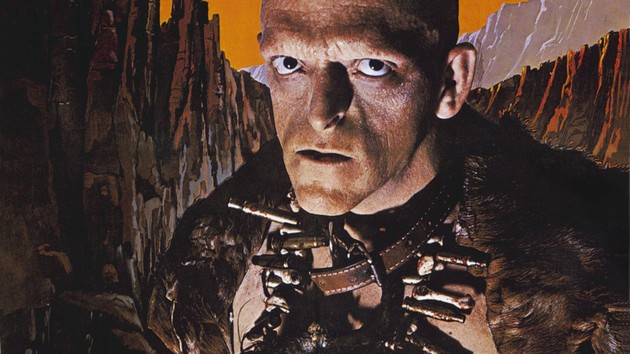
Director: Wes Craven
Craven’s second cult film and one of the most important horror films of the 1970s. The dissolution and rupture of the family and the insurmountable gap between generations continue as recurring themes. The confrontation between two clans and lifestyles (rural and urban) ends up culminating in a climax of violence and brutality, an explosion of anger and rage that gives the story a macabre and hopeless ending.
Blood and violent scenes, yes, but at the service of an interesting approach to the human condition. The discovery of a deep America inhabited by monsters instead of the supposed noble American values.
57. A Nightmare on Elm Street (1984)

Director: Wes Craven
Innovative, brilliantly executed and with a tremendously impactful approach, the tremendous success of this Craven masterpiece made the franchise extend (and languish) in 7 sequels and a remake that would never shine at the height of the original.
We have to thank this film for creating one of the greatest villains of the genre of all time, Freddy Krueger, a cruel child murderer who manages to break through the dreams of his victims. Robert Englund never managed to get rid of the character and Freddy continues to this day as one of the most representative figures of pop culture, although he no longer manages to scare us as much as in 1984.
58. Halloween (1978)

Director: John Carpenter
The movie that really defined the slasher subgenre and inspired plenty of cheap sequels, tributes, and knockoffs. However, the suspense and tension that John Carpenter achieves, helped by the mythical music composed by himself, are unmatched. Michael Myers, with his white and emotionless mask, a reflection of a dark soul, has become another of the undying icons of horror cinema.
A force of evil that walks slowly but never rests, as unknown as it is unbeatable, that finds the last of her shoe in the final girl par excellence, the first and genuine scream queen, the young Laurie Strode (Jamie Lee Curtis). 40 years later, the two meet again (ignoring all the sequels in between), proving that Laurie and Michael are the two quintessential victim and murderer archetypes, condemned to meet and face each other until one of them finally bites the dust.
59. The Wicker Man (1973)

Director: Robin Hardy
Subtle and seductive, her script (by Anthony Schaffer) is a perverse and cunning subversion of constant expectations, simmering ending simmering.
Behind the artifice of the charm of the pagan community folklore led by Lod Summersisle (a huge Christopher Lee) hides a horror that is beyond comprehension. A fascinating, suggestive, morbid and provocative masterpiece.
60. Rosemary’s Baby (1968)

Director: Roman Polanski
The adaptation of Ira Levin’s novel is one of the best Polanski movies and one of the most terrifying of all time, especially for everything “not seen” on screen. A young couple moves into a New York apartment building where there is also a cult of Devil worshipers who want to use poor Mia Farrow as a receptacle for Satan’s seed.
The ceremony in which Rosemary is raped by the Devil while the rest of the neighbors / acolytes watch joyfully is one of the most terrifying and unpleasant in the history of cinema.
61. Seconds (1966)

Director: John Frankenheimer
Possibly the best film by its director, Seconds is an unfairly undervalued and forgotten film, stoned at the time by critics and that did not work well at the box office either. Considered the filmmaker of political paranoia, Frankenheimer applies here to paranoia an existential point of view, perfect for dealing with the issue of identity, key to the story. Saul Bass’s memorable credit titles and Jerry Goldsmith’s grim organ music further accentuate his terrifying tone.
If an individual is stripped of his physical appearance and of everything that surrounds his life, does he cease to be himself? Apart from the interesting subject matter it addresses and the questions it leaves in the air, the suffocating and baroque staging and the constant feeling of paranoia and instability are perfectly handled by the director’s very modern style of shooting, which features delivery absolute of a Rock Hudson away from his usual leading roles.
62. Haute Tension (2003)

Director: Alexandre Aja
Standard-bearer at the time of a series of young directors who launched the new wave of French horror cinema, this film and the glorious remake of Las Colinas have Craven’s eyes in 2006 made him a promise that, unfortunately, was languishing with time. However, Haute Tension (titled Alta Tensión in Spain and The Awakening of Fear in Mexico and Venezuela) was awarded at numerous festivals and is one of the best survivals ever filmed.
With a dirty staging, a meticulous setting and a fast-paced rhythm, the film is a true festival of graphic brutality and psychological terror, with a masterful Cécille de France and a final twist that continues to divide its followers.
63. The Silence of the Lambs (1991)
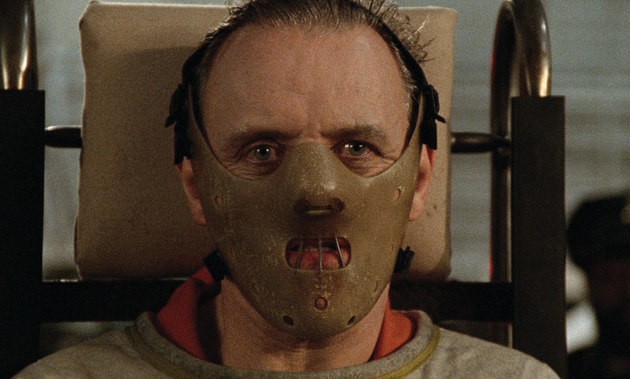
Director: Jonathan Demme
The adaptation of the Thomas Harris novel received an elegant, almost operatic treatment from Demme, who delved into the psyches of all the characters, from an agent Sterling who seeks to free herself from her conditioned desire for security and male dominance, to the “charming “Doctor Lecter, an immeasurable Anthony Hopkins who eats (literally) the screen every time he appears.
Elegant, precise, vibrant, terrifying thriller, directed by a master hand and that became one of the films of the year, of the 90’s and of Cinema, with capital letters. It also had the honor of being the third film to receive the top five awards at the Oscars ceremony. And he gave us a character for posterity, the cannibalistic psychiatrist sybarite Hannibal Lecter, who would be years later embodied by Mads Mikkelsen in a television series that offered an even more interesting reinterpretation of the character, adding new layers of complexity to it.
64. Martyrs (2008)
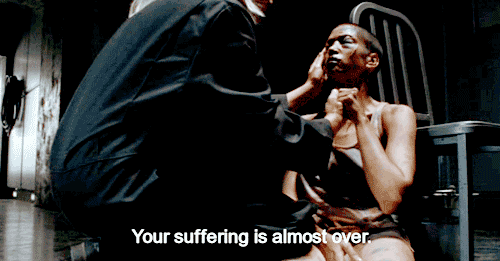
Director: Pascal Laugier
Cinema made by and for the viscera, with a magnificent choreography of violence and an exquisite taste for photography. The true plot of the film is the very aesthetics and beauty of violence, extreme, crude, realistic, difficult and uncomfortable to watch. The controversy accompanied it from its premiere and, of course, it is not suitable for everyone, but it is undeniable that it is an exercise in cinematic courage and that it is impossible to leave anyone indifferent.
Transgressive, reactionary, radical and intelligent, few films are capable of hypnotizing and shaking you at the same time. Honestly, it’s a movie that I’m glad I saw, but I don’t want to see again.
65. The Texas Chainsaw Massacre (1974)

Director: Tobe Hooper
Basic in its brutality but ruthless efficiency, it has not lost an iota of its timeless aggressiveness and its stark reflection of the horrors that human beings can inflict on each other.
An undeniable achievement within the horror genre, too unpleasant to be “enjoyed” but with the merit of having gifted us with one of the scariest horror film icons of all time: Leatherface. Along with Psychosis, the film that laid the foundation for the slasher genre.
66. Ringu (1998)
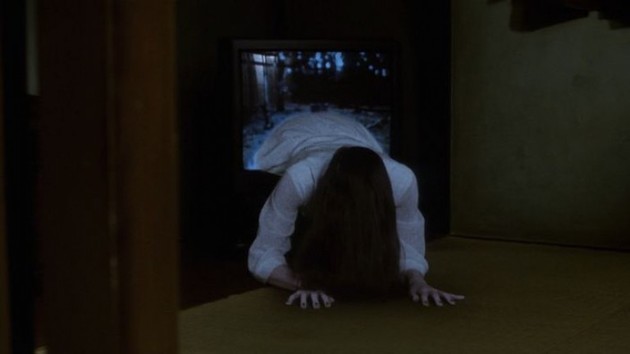
Director: Hideo Nakata
A video tape that kills everyone who sees it. A young woman with long black hair who wriggles out of the television and walks slowly but inexorably until she reaches you and ends your life. A Japanese horror classic that was successfully adapted to the American market in 2002 by Gore Verbinski, who focused more on research into the film’s origins and images.
The original Ringu leans on the hypnotic images and on the strange restlessness of the inexplicable events, without caring too much about the logic of the story. It is one of the most profitable Japanese horror movies of all time and one of the scariest genres.
67. House on Haunted Hill (1959)
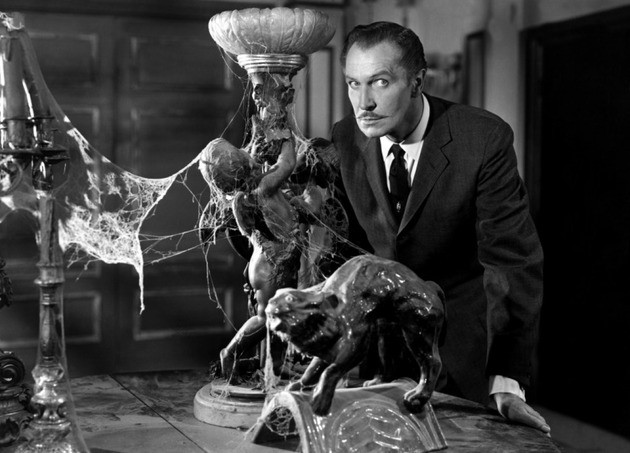
Director: William Castle
One of Castle’s most famous films (which used all sorts of wacky tricks during the screening to scare audiences) and one of the most famous haunted house stories ever brought to the screen. It has a remake and, recently, a successful reinterpretation in the form of a television series thanks to Netflix.
However, if it were not for the charismatic presence of Vincent Price, the film would remain in a modest proposal of series B that, yes, has influenced many later works.
68. Friday the 13th (1980)
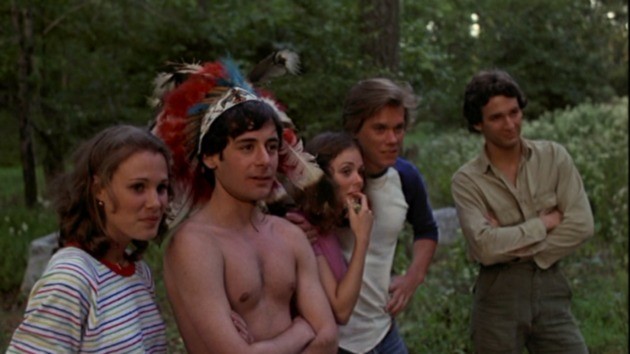
Director: Sean S. Cunningham
Although she loses compared to other great classics of the genre, she was a pioneer in some way of contemporary terror and the slasher, although Jason Voorhees (and not to say his mother) never lived up to the standards of Michael Myers, Freddy Krueger and Leatherface.
Mind you, the Crystal Lake Hockey Mask Killer has the most sequels to a horror franchise, including a crossover with Freddy and a failed remake in 2009.
69. El Orfanato (2007)

Director: Juan Antonio Bayona.
Effective and entertaining film, it was a tremendous success that was backed by a powerful and intelligent marketing campaign.
Conceived as a (too) referential mosaic with a Hollywood appearance that is suitable for all kinds of audiences, the film rises thanks to Bayona’s powerful direction (and her blind faith in the material at hand) and the stupendous interpretation by Belén Rueda, since its development does not stand out precisely for its excessive originality.
70. À l’intérieur (2007)
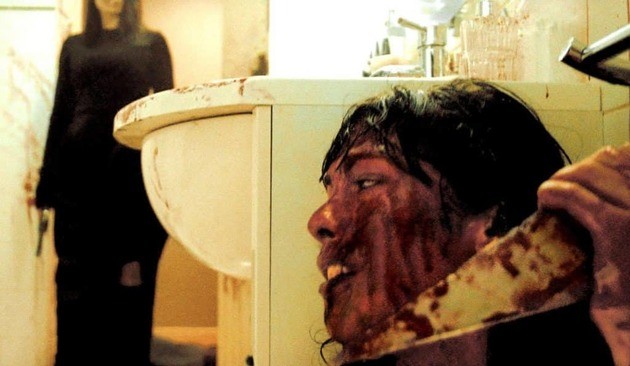
Director: Julien Maury y Alexandre Bustillo
The new French horror cinema has one of its key titles in À l’intérieur, a tough and bloody film that becomes difficult to see at many times. Two women faced with wild fury in a gore-filled battle in which everyday objects (those scissors …) are turned into weapons of mass destruction.Motherhood, pain and guilt are the main themes of this tour de force for which the two leading actresses were awarded at the Sitges Festival.
71. The Babadook (2014)

Directora: Jennifer Kent
This instant horror movie classic features one of the most memorable villains of recent years. With a chilling appearance, it is a supernatural monster that you cannot get rid of once you discover its existence. However, this being torments its victims with one purpose: to explore how they deal with their own inner demons.
The film does not need elaborate special effects or liters of blood to keep us tense throughout its footage. Disturbing atmosphere, psychological terror, aesthetics inspired by German expressionism and its marked symbolism make it a little gem.
72. Saw (2004)
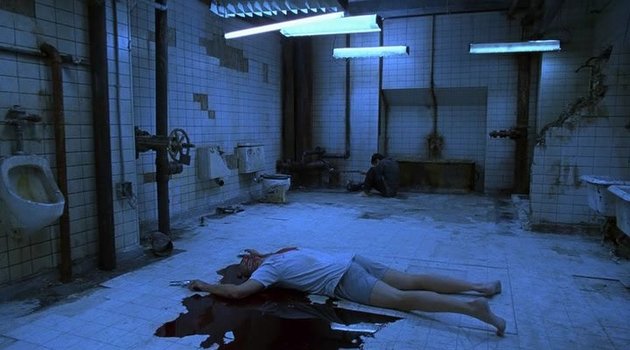
Director: James Wan
Born as a low-budget independent film by James Wan and Leigh Whannell, no one imagined at the time that it would become a (stretched) franchise and make Jigsaw the new fashion villain of horror cinema.
Its intricate script and its wonderful narrative transformed the way of narrating terror. Its unpredictable and surprising ending make this film a little gem of recent genre cinema.
73. The Cabin in the Woods (2012)
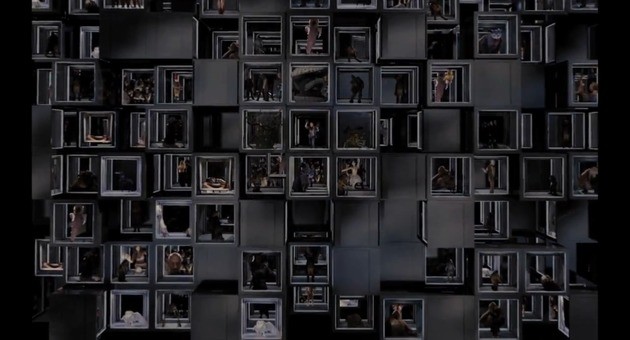
Director: Drew Goddard
Goddard and Joos Whedon’s brilliant script is a fantastic, incisive, and clever deconstruction of horror movies. The spectator’s concern about what is going to happen next is the greatest charm of the film, but the important thing is to get to it knowing as little as possible about its plot.
Only in this way can you fully enjoy this fascinating cinematographic experience that uses all the cliches of the genre to subvert them, using a very measured humor but not skimping on blood, guts and scares. The perfect movie for the true genre buff.
74. Candyman (1992)
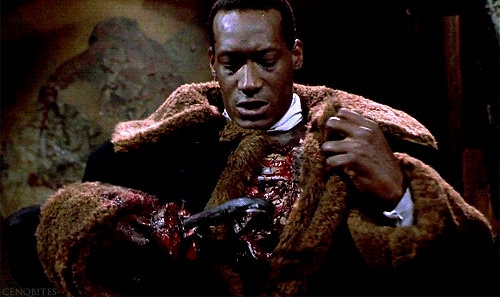
Director: Bernard Rose
Although he’s a brutal killer and a spirit of revenge, Candyman (played by Tony Todd) has an especially tragic past compared to most horror icons. The film caused nightmares for thousands of teenagers in the 90s by adapting a Clive Barker story, specifically The Forbidden, one of the stories from his novel Books of Blood.
Virginia Madsen’s performance and an unhealthy atmosphere make her one of the best movies of the genre of the time and a classic. Reality and fantasy go hand in hand to dissect the psyche of a nation that has not yet reconciled with the mistakes of its past.
75. Jeepers Creepers (2001)

Director: Victor Salva
This supernatural road movie about two young men tormented by a strange man-eating being was born as a low-budget independent project and became, in addition to a box office success, a cult film.
The Creeper, the monster that comes out every 23 years for 23 days to feed on human body parts, chooses its victims by smell and everything it eats becomes part of it, being practically immortal during its feeding period .
76. The Thing (1982)
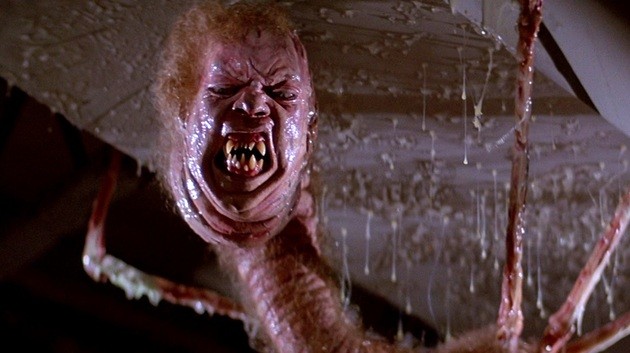
Director: John Carpenter
Remake of The Thing From Another World (1951) by Christian Nyby, is another clear example of a new version that surpasses (and by far) the original. One of Carpenter’s best films, today it is a cult classic, but when it was released it received a great setback from the critics and had to compete at the box office with E.T. , which made their collection not as good as expected. Over the years, time has placed it in the place it deserves and is considered one of the most terrifying films in history.
The music of Enio Morricone, the effects of Rob Bottin and Stan Winston and a Kurt Russel in a state of grace make this film a true cinematic experience. The atmosphere achieved by Carpenter throughout the film, culminating in that mythical and disheartening open ending, make us speak, not only of one of the best horror and science fiction films of all time, but of a masterpiece of cinema in general.
77. The Mist (2007)
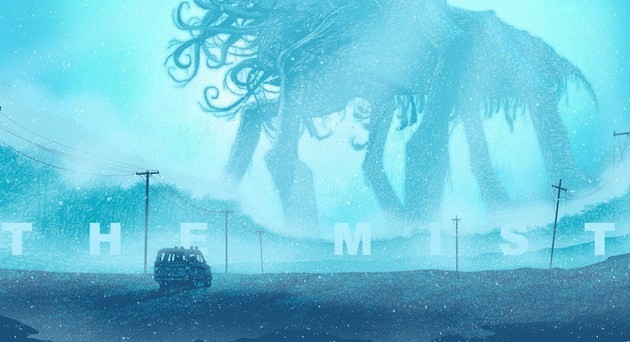
Director: Frank Darabont
Based on Stephen King’s short novel, Darabont’s stupendous adaptation divided many by its brutal and intense ending, which leaves you nailed to the armchair. Realistically and terrifyingly, the director tells us how fear and despair transform a group of people into beings as terrible as those who live within that mysterious mist that hangs over them, which seems to be taken from a science fiction movie old (in a good way).
The important thing about this film is not the Fog, as a monstrous and inexplicable entity, but an uncompromising look at the most fearsome and stupid side of the human being.
78. The Sixth Sense (1999)
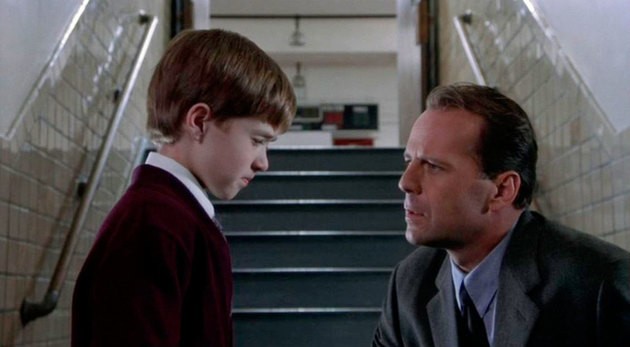
Director: M. Night Shyamalan
Although everyone remembers her especially for her surprising final twist, the film that catapulted Shyamalan is an elegant dissection of pain and loss, mixing realistic and supernatural elements with great brilliance, always with the humanism with which the director imbues his works and their characters.
Ghost story, supernatural thriller, drama … has it all and everything told in a precise and delicate way, despite the shocks of horror that flood the film.
79. The Visit (2015)
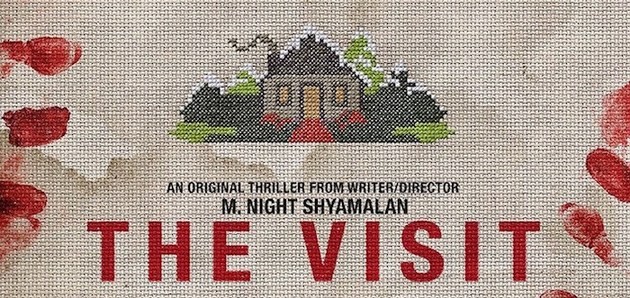
Director: M. Night Shyamalan
The found footage resource is used here as a way of externalizing the internal wounds of all the characters.
A very balanced and precise direction and a great work by actors make this mixture of horror, comedy and drama an inspiring proposal that, as usual with its director, divided the audience. Some did not take communion with their self-conscious meta-cinematic game, while most of us enjoyed their acid deconstruction of different topics of horror cinema.
80. Dressed to Kill (1980)
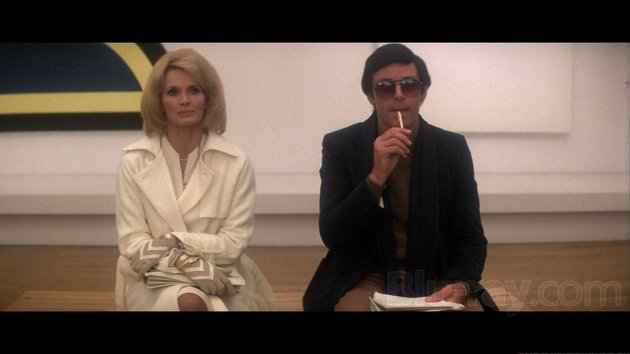
Director: Brian De Palma
Essential ’80s thriller, not valued enough, is an absolute masterpiece of its director for multiple reasons. The camera movements perfectly executed to create a mood at all times, the use of cinematographic space and time, the shameless and brilliant mix of genres, its macabre and fun look, the intense creative impulse that is present in each and every one of his frames … We can continue and we would not finish.
He anticipated in some ways many of the erotic thrillers of the 90s, but in a much wilder and more intense way, investigating the darkest and twisted recesses of the human mind in a furiously audiovisual and dynamic way. Instinto Básico (1992) paid tribute to the famous elevator sequence and is still a kind of thematic and stylistic continuation of this film.
81. Gremlins (1984)
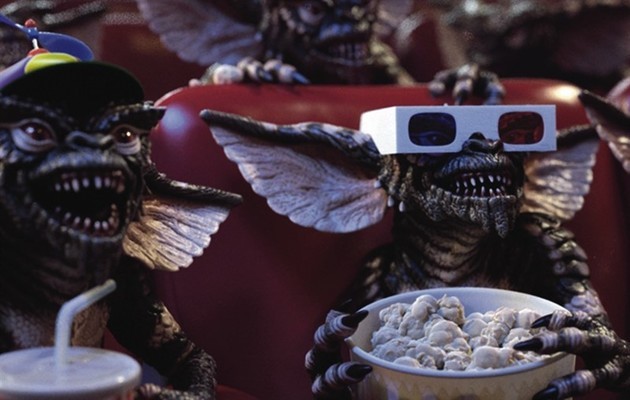
Director: Joe Dante
Being able to enter any list of Christmas movies and family movies, its violence and dark humor have made it a cult classic.
Scripted by Chris Columbus (inspired by the noise that mice made in his apartment at night) and produced by Spielberg, Gremlins is a perfect mix of black comedy and horror, with a wild and acid side too dark for children but It did not prevent it from becoming a success and many of us remember it as one of the films that most marked us as children.
82. Donnie Darko (2001)
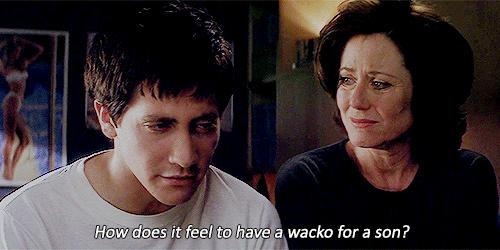
Director: Richard Kelly
This is one of those movies that meets all the conditions to become a cult movie and over time has garnered a legion of fans who continue to search for different readings of its mysterious plot.
There are those who see in it a parable about parallel realities (the most widespread theory) and its script, scenery, iconography and rhythm work perfectly and grab our attention at all times. It is a film that tastes different and is proud of it. According to rabbit Frank, the world will end in 28 days, 6 hours, 42 minutes and 12 seconds.
83. Misery (1990)

Director: Rob Reiner
One of the best adaptations of Stephen King and probably his best novel, the absence of supernatural elements and the metallurgical game in his history, with that sick and psychopathic relationship between the protagonists (superb Kathy Bates and James Caan) make her the perfect portrait from an obsession, that of the fatal fan Annie Wilkes.
Luxury psychological terror with perfectly dosed tension and an unpleasant sensation of cruelty that makes us suffer (and enjoy) the most with this macabre game of cat and mouse.
84. Suspiria (1977)
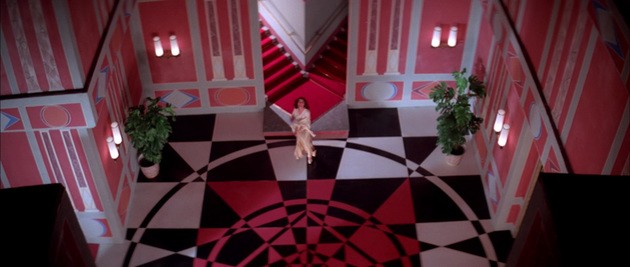
Director: Dario Argento
The director’s masterpiece is a feverish reverie in technicolor riddled with aesthetic violence and an operatic production design that make her the greatest exponent of the Giallo genre. Sumptuous, frenetic, with a wonderful soundtrack, it elevated its director to the altars of the horror genre. A perverse journey that takes us to a prestigious dance academy where an ancient and sinister clan of witches hide. A visual and auditory immersion experience to reflect that evil is hidden in every corner.
In 2018, a new version directed by Luca Guadagnino (Call me by your name) is released.
85. Train to Busan (2016)
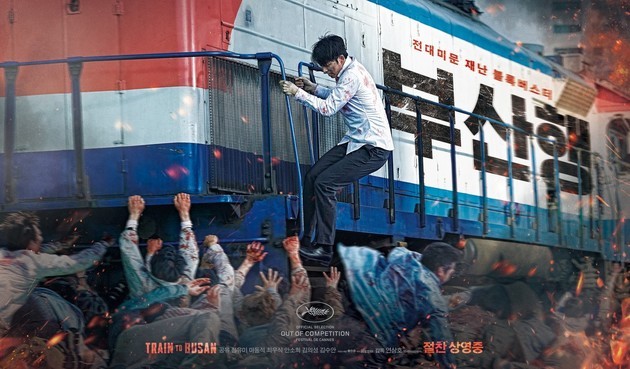
Director: Yeon Sang-ho
One of the best zombie movies ever made that goes straight to the point (that is, to the blood) and that incidentally allows a criticism of the powers and the human being, who instead of uniting against an enemy unstoppable, he lets himself be carried away by fear and ignorance.
An emotional journey full of death, but that does not abuse the gore, and an exciting entertainment.
86. Invasion of the Body Snatchers (1978)
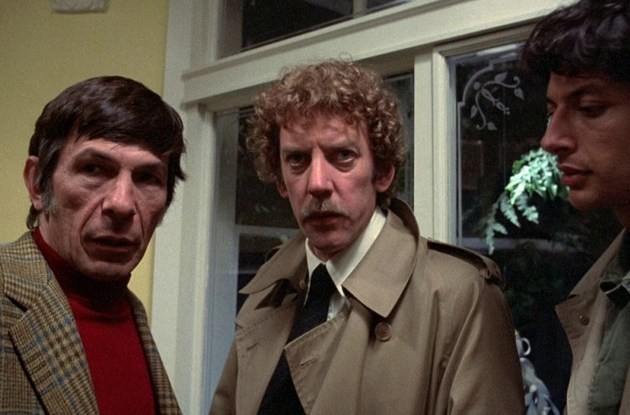
Director: Philip Kaufman
Revisiting Don Siegel’s classic from 1956, Kaufman’s smart and respectful version adapts to the new times with a new approach and important details that further enrich the already fascinating original premise, being an accurate reflection of the times and the society of the moment in which it is shot.
The distressing and oppressive atmosphere, the paranoia that is unleashed between the protagonists (each and every one of the actors), the realistic treatment of the story and a memorable (and terrifying) climax make it one of the peak works of the genre and a classic with capital letters of the seventh art.
87. The Witch (2016)
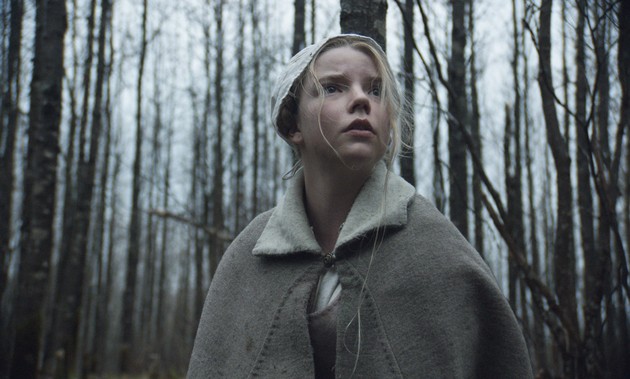
Director: Robert Eggers
A tense and atmospheric portrait about the religious paranoia of the early 17th century. An exquisite sense of vintage details in costumes, surroundings and vernacular language.
On the surface, a horror movie; basically, a reflection on the dominance of men over women and the repression of sexuality and female independence.
88. Child’s Play (1988)

Director: Tom Holland
The originality of this film does not lie in the fact that the origin of fear is a child’s doll (pediophobia), but in turning him into a serial killer. Chucky would rise as yet another pop icon on the sequel-inspiring phsyco killer list, but this first installment would be the best ever.
Suspense and horror film in equal parts, it continues to work despite the time and Brad Dourif’s voice continues to cause a bad vibe.
89. IT (2017)
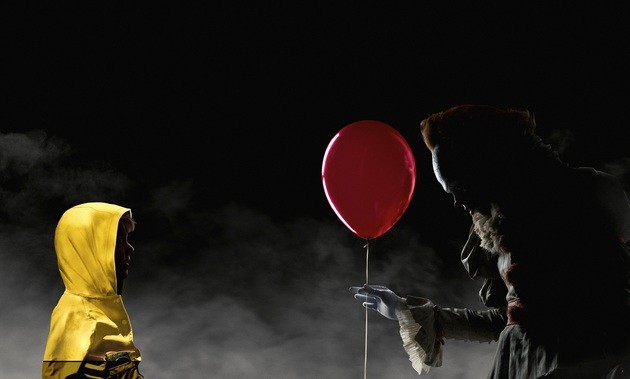
Director: Andrés Muschietti
What makes It one of Stephen King’s essential novels (and one of his best books) is not just the presence of the disturbing clown Pennywise, but his realistic and wonderful approach to puberty, with its anxieties, fears, and insecurities. What matters here are its characters, flesh-and-blood youth who are credible to us at all times and who we accompany on this terrifying and disturbing journey as they seek to take control of their destiny.
Although we have chosen the version released in 2017, a great critical and public success, we cannot forget the famous 1990 miniseries, where Tim Curry played a Pennywise that we dare say is even more disturbing than that of Bill Skarsgård in the new version. For tastes, colors …
90. Christine (1983)

Director: John Carpenter
And we continue with King, accompanied this time by Master Carpenter. The two creators repeat several times on our list, but they are both, each in his field, two great Masters of Horror. Although this film is a “minor” Carpenter, it is already much better than most of the modern precast horror proposals that try to sell us every so often.However, a slightly disappointing treatment of the story and putting the gimmick before the disturbing make it a half-hearted film that falls short of expectations. Of course, seeing Christine “regenerate” is a delight (the visual effects continue to surprise despite the time) and the meticulous selection of music from the 50s become the voice and conscience of the evil car.
91. The Hitcher (1986)
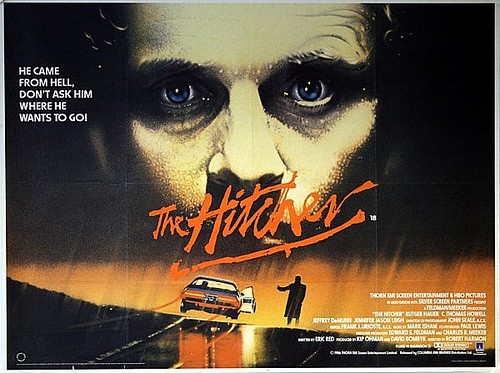
Director: Robert Harmon
The John Ryder embodied by a colossal Rutger Hauer is the best of this low-budget film that, despite having a not too original premise, manages to transmit fear and tension with each of the scenes of persecution and violence in a setting as simple as a highway in the middle of nowhere.
An essential classic for lovers of good thriller, suspense cinema and psychological terror.
92. What Ever Happened to Baby Jane? (1962)
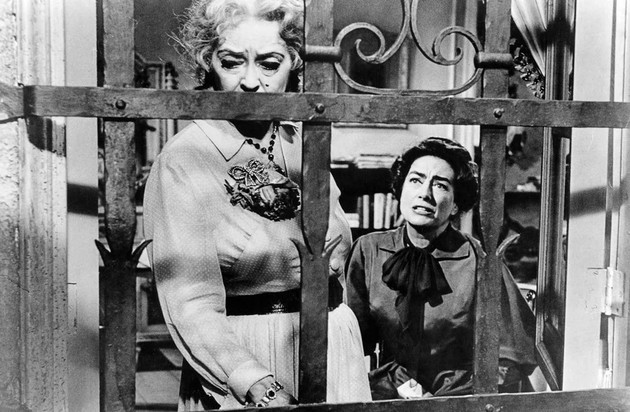
Director: Robert Aldrich
When Bette Davis and Joan Crawford got together to work together for the first time, the film became the climax of a mythical rivalry that spanned the years, but also revitalized the careers of both actresses.
This masterpiece of gothic horror had a tremendously difficult shoot, but this story of two sisters who had their glory years but have been forgotten has become a classic in film history. The hatred, the rancor, the ego that cross the screen make this pitched battle between the two actresses a tremendously enjoyable experience.
93. Village of the Damned (1960)

Director: Wolf Rilla
From a John Wyndham novel, we are told a true nightmare tale where terror takes the form of children. The anguish and fear of the unknown that are taking over the people serve as a reflection of this metaphor about the eternal war between generations.
A great little classic where the few resources are used brilliantly and where the tension is increasing until the wonderful outcome.
94. The Changeling (1980)
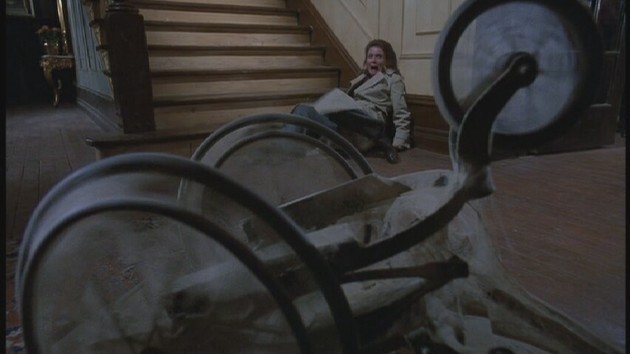
Director: Peter Medak
This film is an exemplary case of the ghost and haunted house subgenre. One of the most curious things is that 90% of the script is based on the real experiences of Russel Hunter, author of the novel on which it is based. Everything unfolds in a reasonable, consistent, and effective way, with no special effects beyond moving objects and voices appearing in audio recordings.
Suspense, mystery, terror and an excellent cast headed by a great George C. Scott make The Changeling a classic that has influenced countless subsequent films.
95. Cat People (1942)

Director: Jacques Tourneur
Based on Val Lewton’s tale “The Bagheeta,” the story follows an American who falls in love with a Serbian immigrant who has a peculiar belief, based on the legends of her hometown, that she will become a wild cat when she is sexually aroused. Despite the fact that this belief complicates their relationship, they end up getting married, but when he begins to fall in love with a co-worker, the transformation of the protagonist is inevitably unleashed.
Unusual horror movie, we never see Irene’s transformation on screen, which does not occur of her own will, but really due to the very fact of looking sexually aroused. The dangers of sex and seduction, divorce, fatal women and mental illness … it’s all in this film, which wisely plays with suggesting, rather than showing, but manages to create a disturbing atmosphere that seduces and terrifies us at the same time.
96. Cat People (1982)
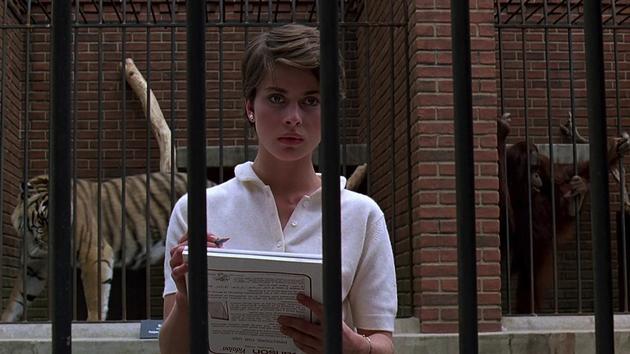
Director: Paul Schrader
Schrader’s remake moves the action from the original New York film to New Orleans, adding an incestuous relationship between brothers and maintaining sex as the main engine of the story, although in a more graphic and visceral way. The mixture of lust and violence that the character of Nastassja Kinski experiences was something shocking for the time, coming from a woman. The childishness of her character, prior to her sexual awakening, means that the character is always dominated or influenced by the wishes of men, rather than by her own.
Irene’s transformation into a panther demanded the most sophisticated special effects of the time. Its murky atmosphere and its suggestive and erotic staging make it a film to claim, both within the interesting filmography of its director, as well as within the genre.
97. Braindead (1992)
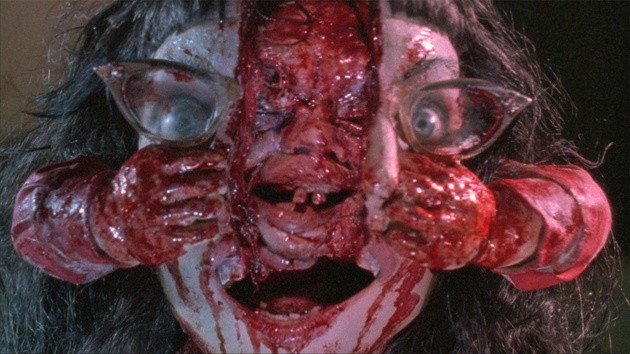
Director: Peter Jackson
One of the first films of its director, where his style was characterized by experimentation without brakes and with the freedom that having a low budget afforded. His bassoonization by the machinery of Hollywood gave us the trilogy of The Lord of the Rings, but ended up spoiling the thug, uninhibited and wild character of his early days.
Braindead (also known as Dead Alive) is a film from its time that drank from a lot of references to offer us a dirty, macabre, comic and terrifying story at the same time, a stark and humorous but respectful vision of the zombie concept.
98. Eraserhead (1977)

Director: David Lynch
Risky Lynch directorial debut, this unclassifiable film is both a delusional surreal horror film and an absolutely personal parody experiment.
Parable about fatherhood or metaphor about the impossibility of being happy in a miserable world, Eraserhead already points out all the characteristics of the universe of his creator, such as his taste for humor, surrealism and the dreamlike.
99. Funny Games (1997)
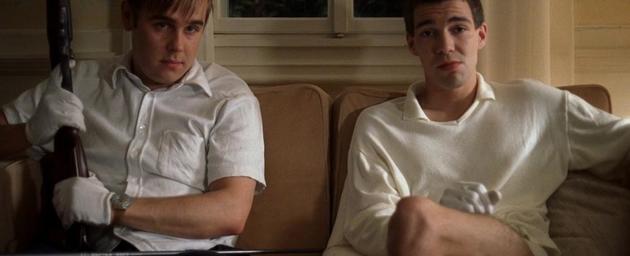
Director: Michael Haneke
Two “normal” -looking young psychopaths enter the home of a wealthy family and subject them to a series of sickly games and torture of all kinds, while constantly addressing the audience, appealing to the complicity of the public and engaging them in horrors seen on screen. Basically, a criticism of an audience that enjoys torture and the suffering of others as entertainment.
Brilliant, sickly, provocative, nihilistic, the film aims to be a terrifying moral fable about the influence of violence on our society.
100. Possession (1981)
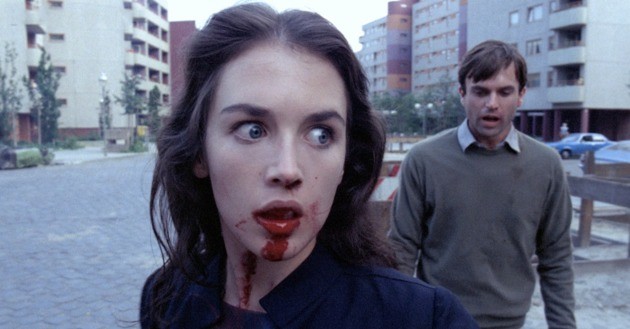
Director: Andrzej Zulawski
Isabelle Adjani stated that it took years of therapy to recover from the physical and emotional burnout from shooting this film, a hysterical domestic drama about sexual obsessions, attraction to death, and lack of self-esteem.
Controversial, censored, excessive, violent … a whole cinematographic experience.
101. Re-Animator (1985)
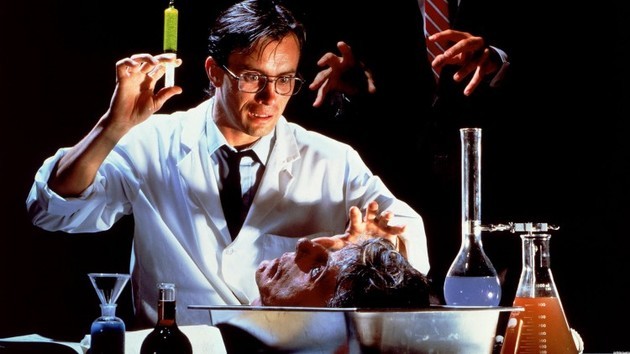
Director: Stuart Gordon
Based on H.P. Lovecraft “Herbert West, Reanimator”, this cult movie among gore fans, brilliantly combines horror and comedy with very solvent low-budget effects.
The legendary Jeffrey Combs plays Dr. West, a medical student transferred from Europe to the Miskatonic University School of Medicine to further develop his body resuscitation serum. As expected, the experiments are beyond his control, with dire consequences for him and his roommate.
102. Videodrome (1983)
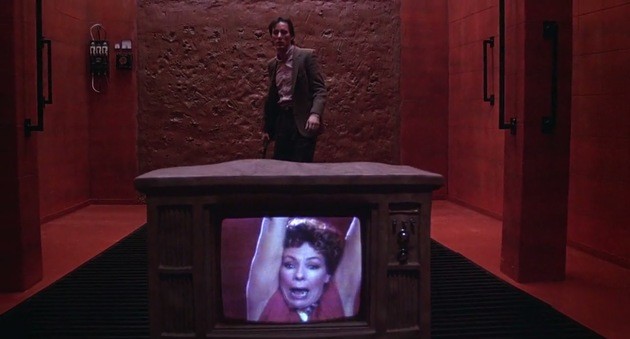
Director: David Cronenberg
It is not easy to have to select between the filmography of the Canadian director, full of titles so interesting that they are ascribed to the fantastic and / or horror genre such as The Dead Zone, Scanners, Dead Ringers and even The Naked Lunch. All of them deserve to be on this list, but if we opt for Videodrome it is for its status as a cult classic of fantastic cinema and for being one of the greatest exponents of its “new meat” philosophy.
Disturbing, sickly, dirty and terrifying. The usual degradation and transformation of Cronenberg’s characters (who suffer because they resist accepting the inevitable) serve to criticize how we see certain content on television and the influence of violence and sex on our society. .
103. You’re Next (2013)
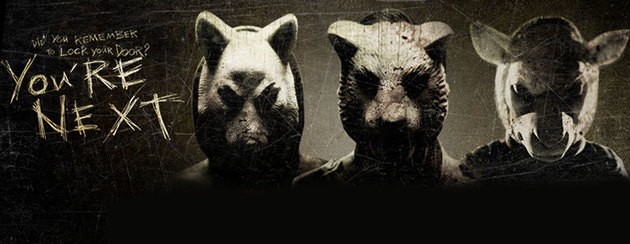
Director: Adam Wingard
Discreet but forceful horror film that is ascribed to the sub-genre of home invasion or home invasion (home invasion), this twisted and macabre game of cat and mouse is full of surprises and has in its acid humor one of its best assets.
Deep down, it’s just a light-hearted and shameless horror comedy, with a sadistic and playful character that makes her tremendously enjoyable, especially since she doesn’t take herself too seriously.
104. Demons (1985)

Director: Lamberto Bava
Produced by Dario Argento, the son of the legendary Mario Bava obtained with Demons one of those cult films that we fans claim for their mischievous nature, playing with the stereotypes of the genre and undressing them of classicism in favor of the most blatant terror. Her self-awareness, her limited means and her lack of pretension make her an unhealthy diversion with a final section as rugged as it is impossible to forget.
Its trash spirit, excessive gore and openly embracing its nature as a genre film have made it a mythical film whose sole purpose is to make viewers enjoy themselves. And boy does he get it.
105. When a Stranger Calls (1979)

Director: Fred Walton
An assassin torments a babysitter on the phone in one of the scariest movie opening sequences in film history. Years later, an investigator obsessed with the murderer is in charge of following him when he escapes from the asylum where he was locked up.
The moment Carol Kane (and the viewers) realize that the call is made from inside the house is not to be forgotten.
106. El espinazo del diablo (2001)
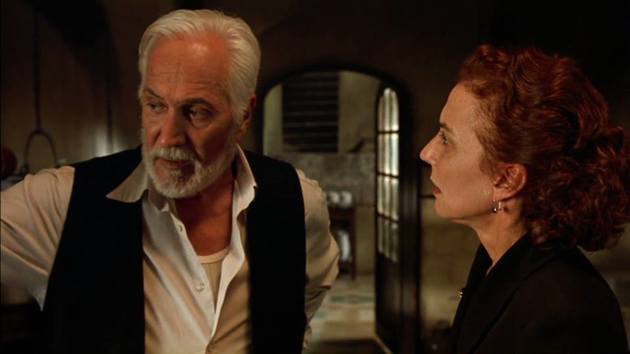
Director: Guillermo del Toro
The Mexican filmmaker’s first foray into Spanish cinema was a crude and interesting approach to the subject of the Civil War with a treatment of a fable told through the eyes of children, as would happen in his later (and also magnificent) El Laberinto del Fauno (2006).
Simple story told as a gothic tale riddled with ghosts (real or not) that deals with revenge and the loss of innocence of a group of innocent children who suffer the traumas of war, leaving open wounds that accompany all life .
107. ¿Quién puede matar a un niño? (1976)
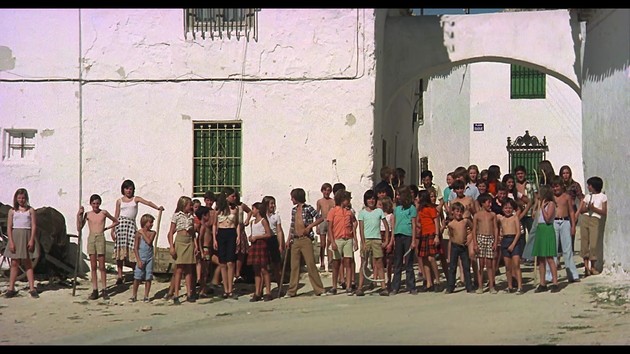
Director: Narciso Ibáñez Serrador
One of the most modern and risky proposals in the entire history of the genre in Spain and which has become a cult film over time for different generations.
Their closed universe with a tense and claustrophobic environment hides a metaphor for our future and an allegory for our society: children have plenty of reasons to rebel against adults. The fact that the film continues to operate today is mainly due to the director’s intelligent and unprejudiced use of realistic violence, showing topics that are usually taboo (and more so at that time), but without falling into the morbid and gratuitous.
SEE ALSO

